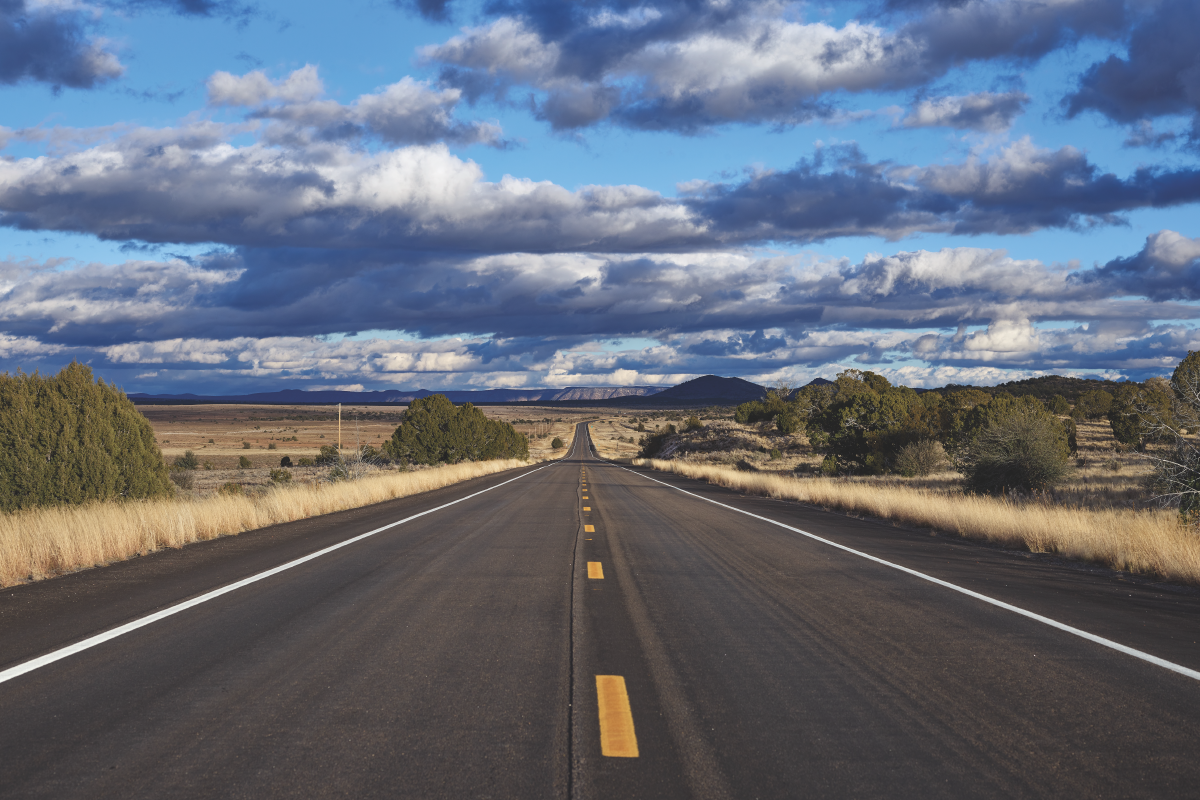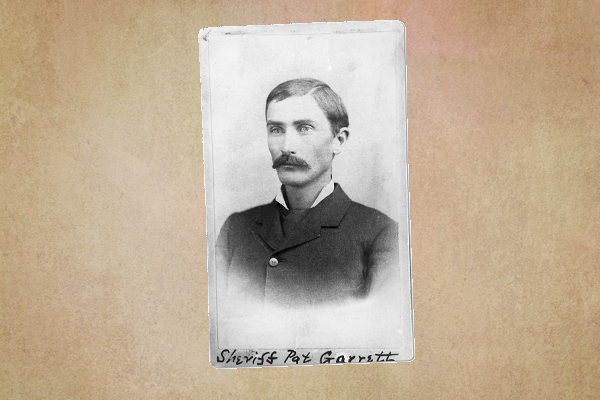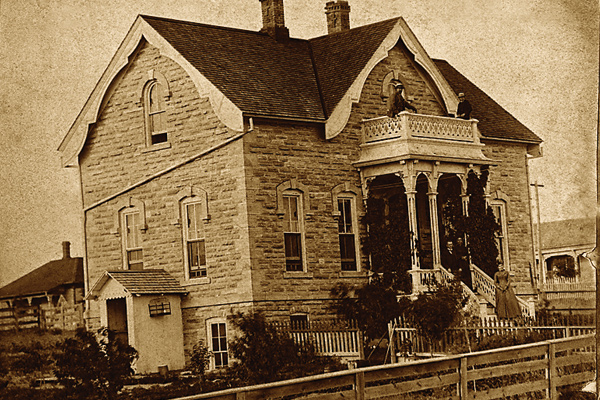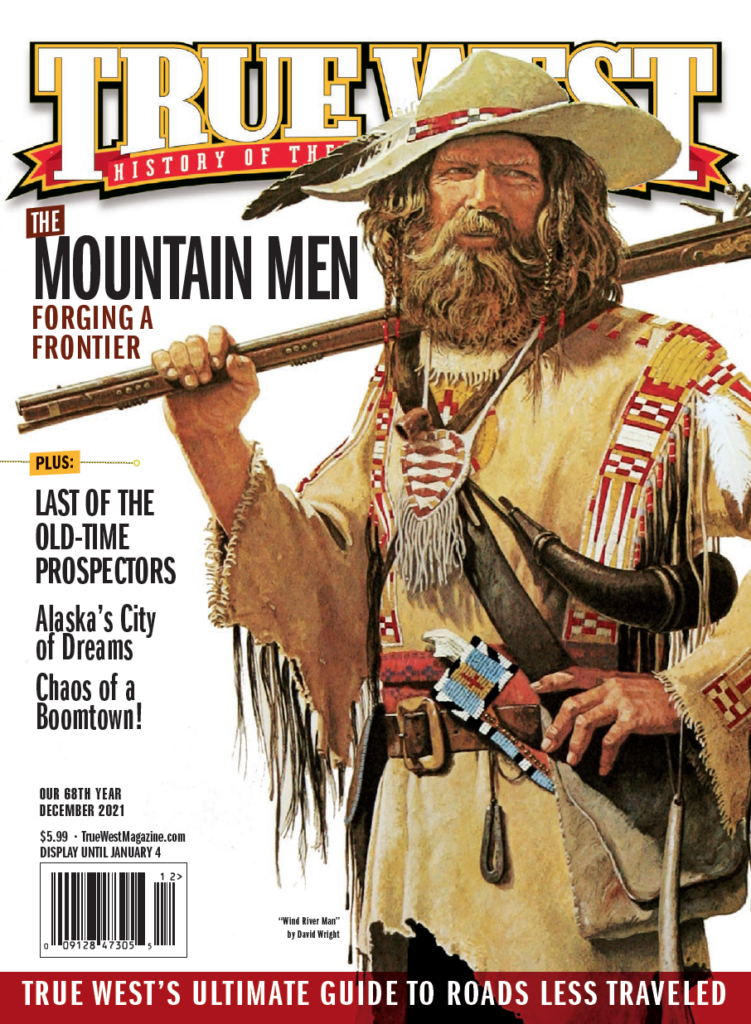Adventures await along the West’s byways and highways to history.
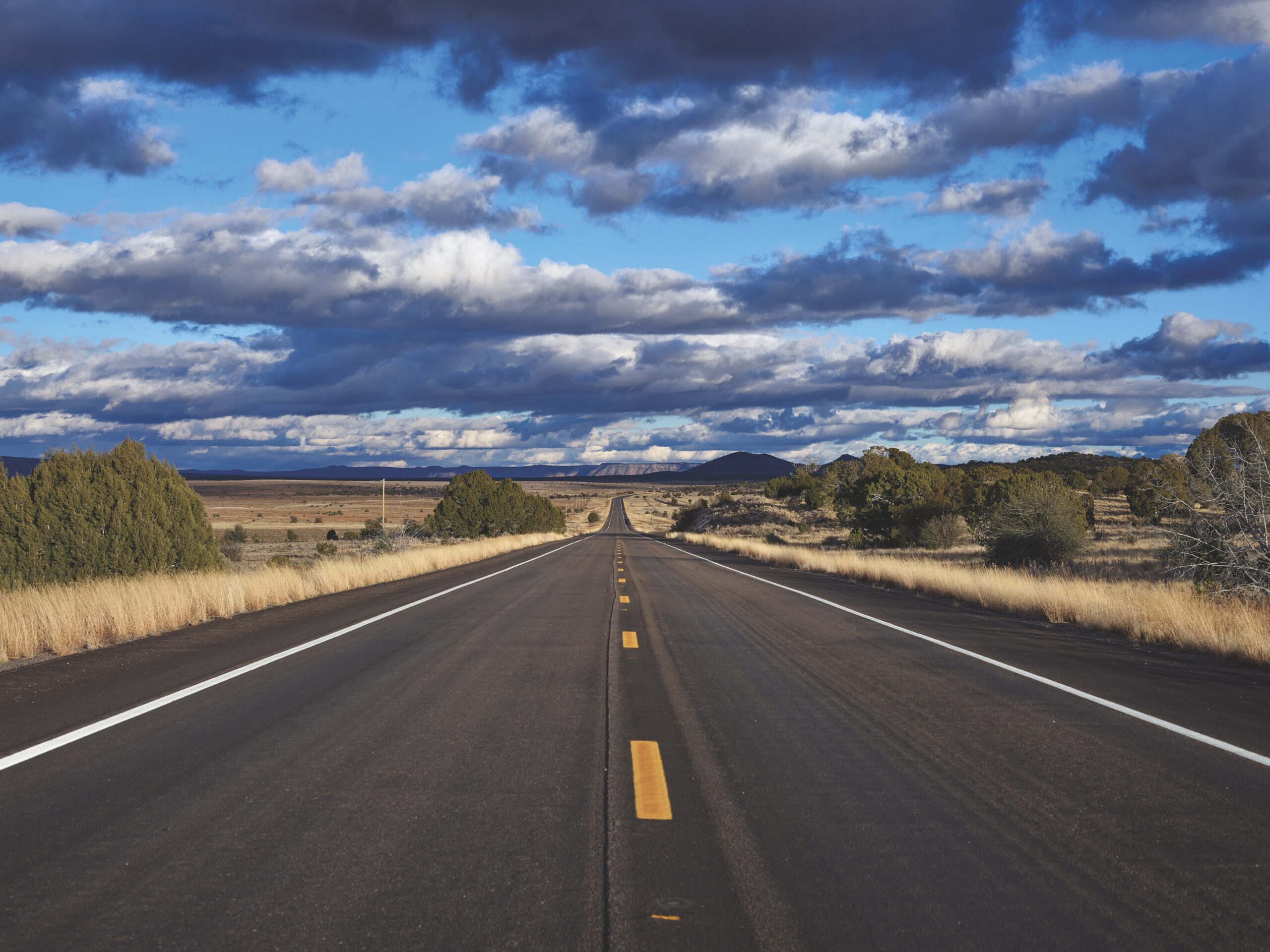
As the first rays of the morning sun greet us just over the horizon as we head west on a two-lane blacktop, the anticipation of the day’s adventures and roads ahead fill our minds with curiosity, excitement and joy. The morning might have started on a major interstate, but soon the route has taken us off the super highway into the heart of the West. We’ll travel along scenic roads to historic sites, welcoming small towns and regional museums that showcase local history, artifacts and art that can only be enjoyed along the roads less traveled.
So what are you waiting for? Pack your bags, load your car and hit the road! You’re burning daylight!
The Pacific Coast
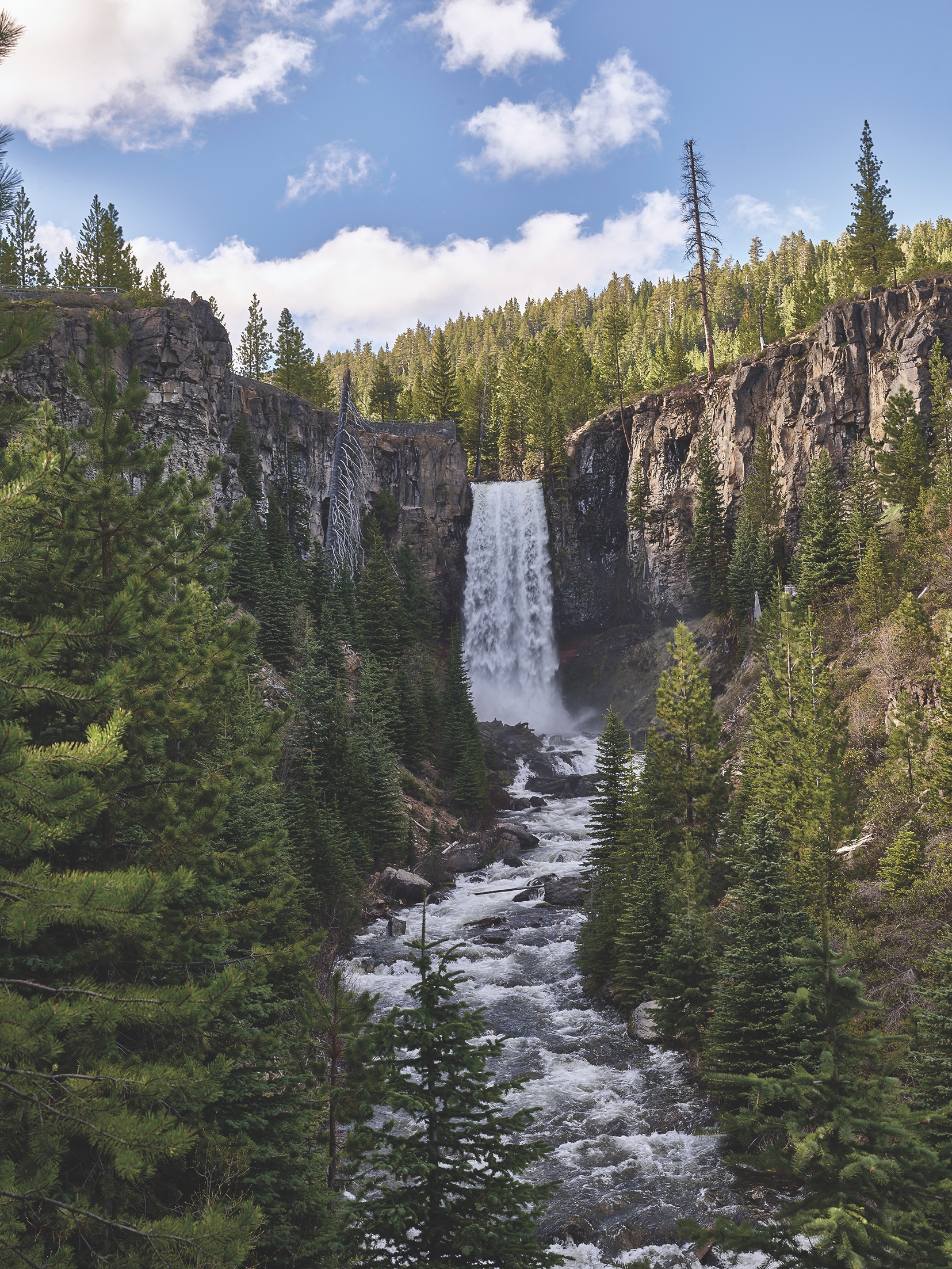
Oregon Trail Country
Escape the big city and experience the beauty of the Beaver State east of the Cascades.
Oregon is one of the most diverse and beautiful Western states, and its highways and byways are perfect in all seasons for the adventurous traveler. Oregonians will tell you that “if you don’t like the weather now, wait an hour and it will change,” which is the truth. Whether traveling in the summer or winter, spring or fall, driving the scenic roads of the Beaver State will lead the Oregon road tripper to quickly discover that it is an amazing state to drive with some of the most scenic vistas, geography and byways in the Pacific Northwest.
Many will start the tour in the city’s largest metropolis, Portland. This is ideal because the Historic Columbia River Highway from Portland immediately takes you off the interstate and allows the driver a slow, beautiful drive through one of North America’s natural wonders, the Columbia River Gorge, to The Dalles.
Take your time and enjoy Oregon’s heritage and scenic beauty on this round trip from Portland to Oregon east of the Cascades.
Key Stops:
Portland: Before arriving in the state’s largest city, exit I-84 onto the scenic slow route, U.S. 30/Historic Columbia River Highway. Don’t miss Multnomah Falls, Oregon’s tallest waterfall. When in Portland, be sure to visit the Oregon Historical Society and Powell’s Books before heading south to tour the capital city, Salem.
Oregon City: A great side trip on the way to or from Portland, The Oregon Trail Interpretive Center in Oregon City is the official Western end point of the Oregon Trail.
Hood River: At this wonderful destination city on the banks of the Columbia River, visitors enjoy the arts, food, wine, brewpubs and the scenic beauty of the foothills of Mount Hood. Don’t miss a ride on the Mount Hood Railroad.
The Dalles: En route to The Dalles on I-84/U.S. 30 from Pendleton, take a detour at the Deschutes River State Recreation Area. When in town, book a hotel for a long weekend to enjoy the historic Oregon Trail city, Fort Dalles and the Columbia Gorge Discovery Center.
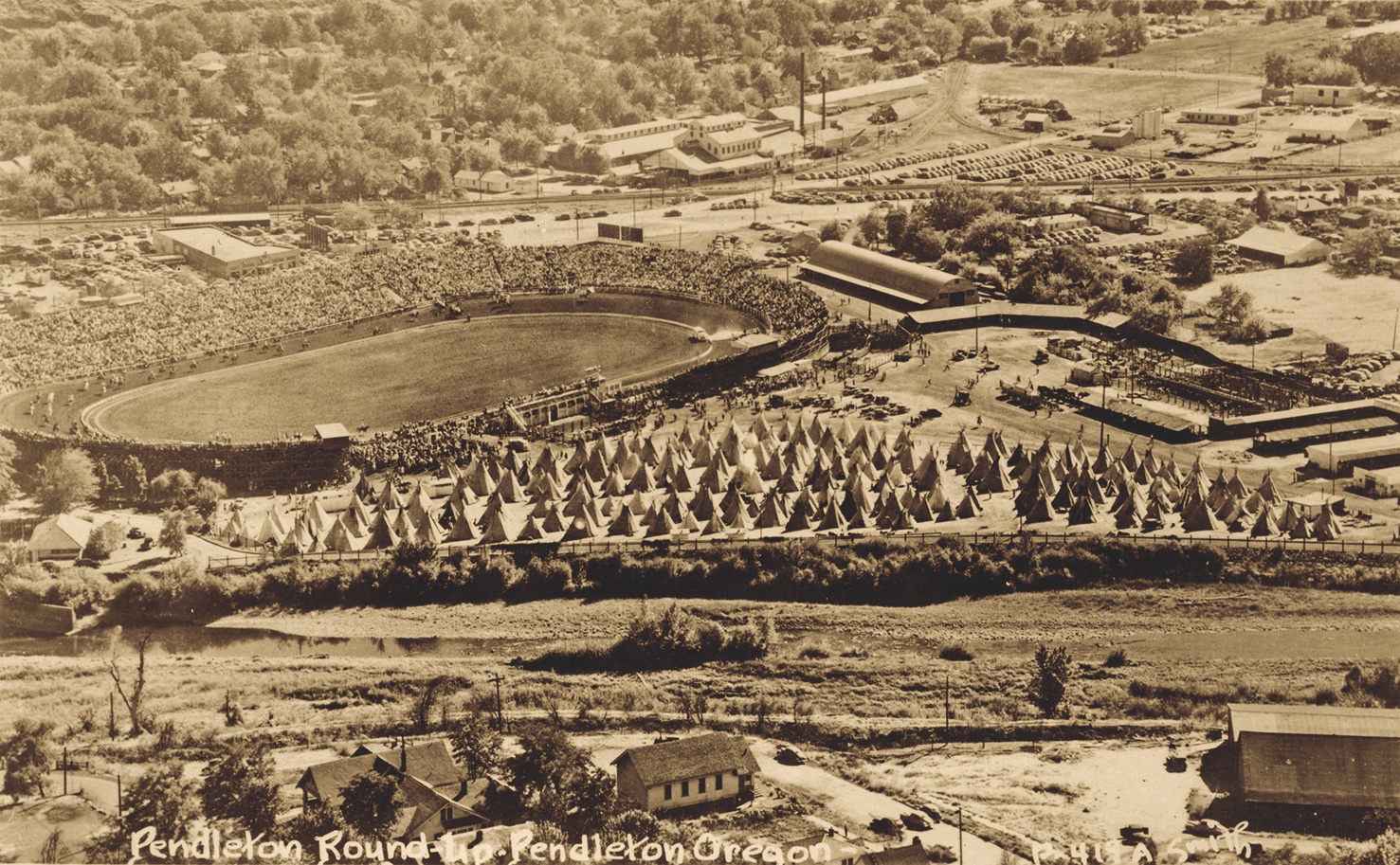
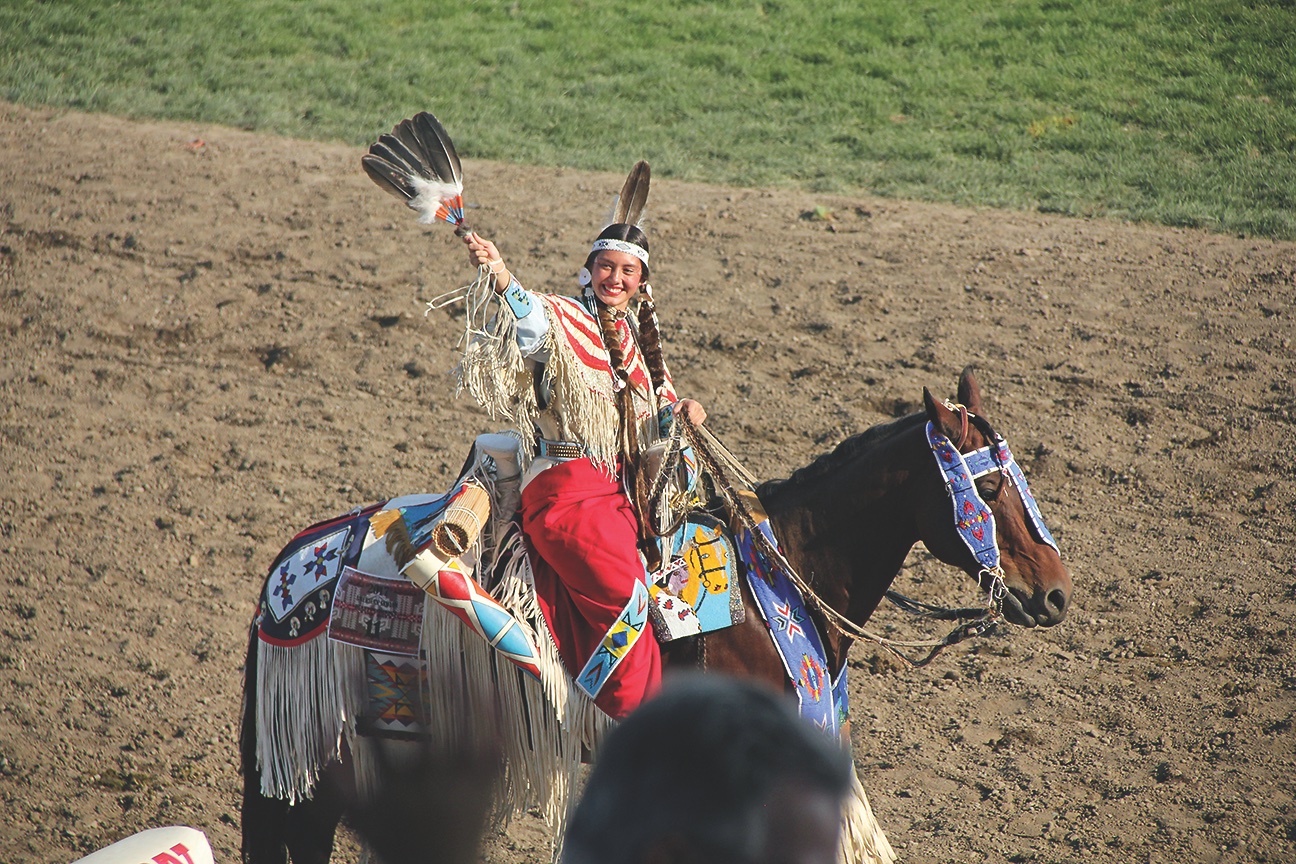
Pendleton: When visiting this Old West destination famous for the Pendleton Round-Up and its historic downtown, take the Pendleton Underground Tours and visit Hamley’s & Co., the famous saddle and Western wear shop, in business since 1883.
LaGrande: Book a room at The Lodge at Hot Lake Springs and enjoy the beauty of eastern Oregon; take a side trip to Joseph and visit the Old Chief Joseph Monument.
Baker City: A charming, historic Oregon Trail city invites visitors to relax downtown, enjoy the scenic beauty of the Powder River Valley and visit its wonderful museums, including the Baker Heritage Museum and National Historic Oregon Trail Interpretive Center.
Bend: At this gateway city to recreation in the Cascades and the Deschutes River, don’t miss a tour of the High Desert Museum and the Deschutes Historical Museum.
Websites: TravelOregon.com, NPS.com and FS.USDA.gov
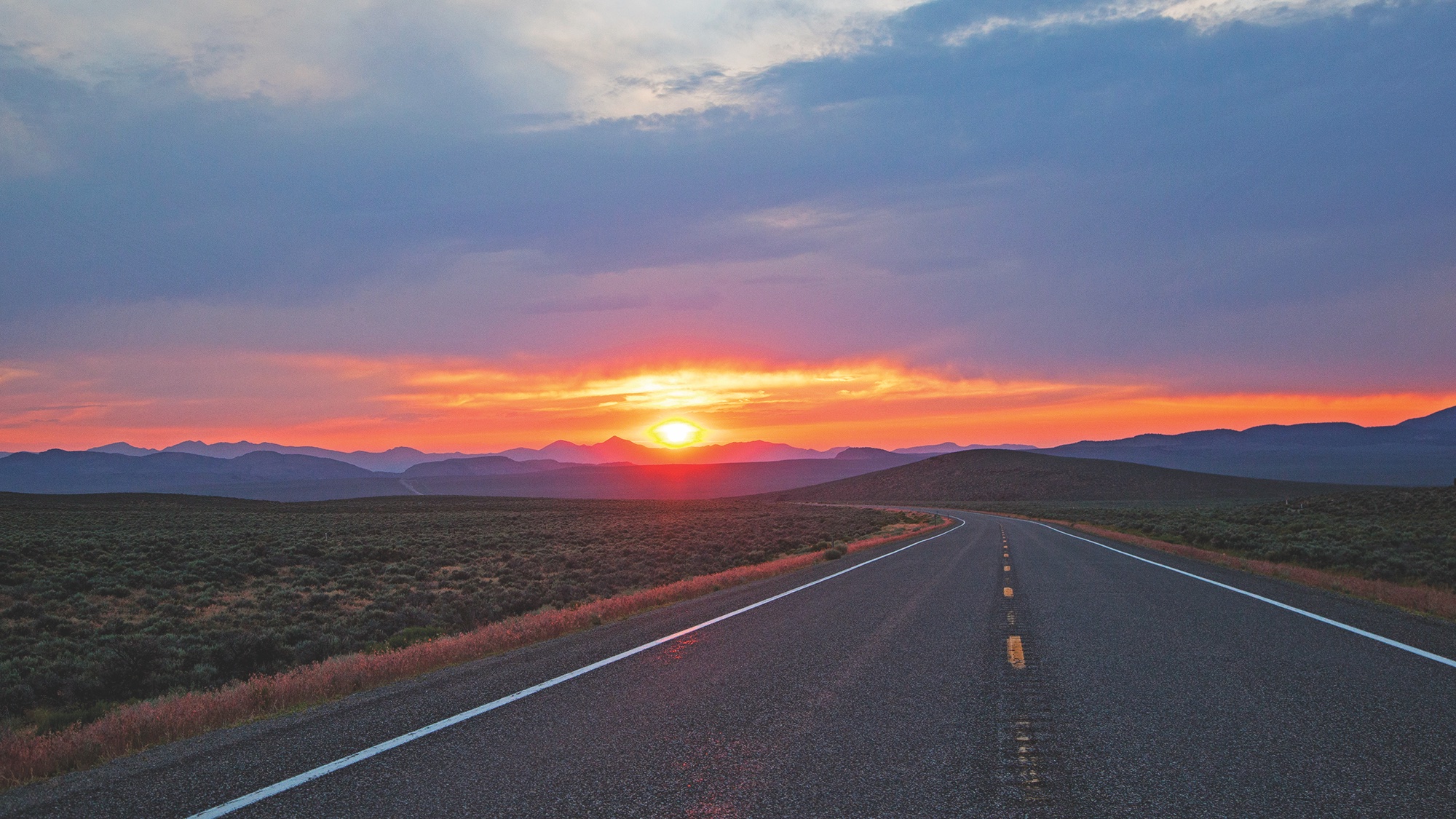
The Silver Trail
Explore Nevada on its back country roads to its historic mining towns.
Anyone who has dreamed of traveling to Nevada beyond the bright lights of the Las Vegas strip and the casinos of Reno, will discover the scenic byways and highways of the Silver State lead the traveler down long, lonely high-desert highways with the greatest vistas to some of the most historic mining towns in the West.
Carson City is the perfect place to start an adventurous round trip of historic silver camps. The state capital is just a short drive from Reno, which has a major airport that is crowded with skiers going to the Nevada-California ski resorts near Lake Tahoe, California.
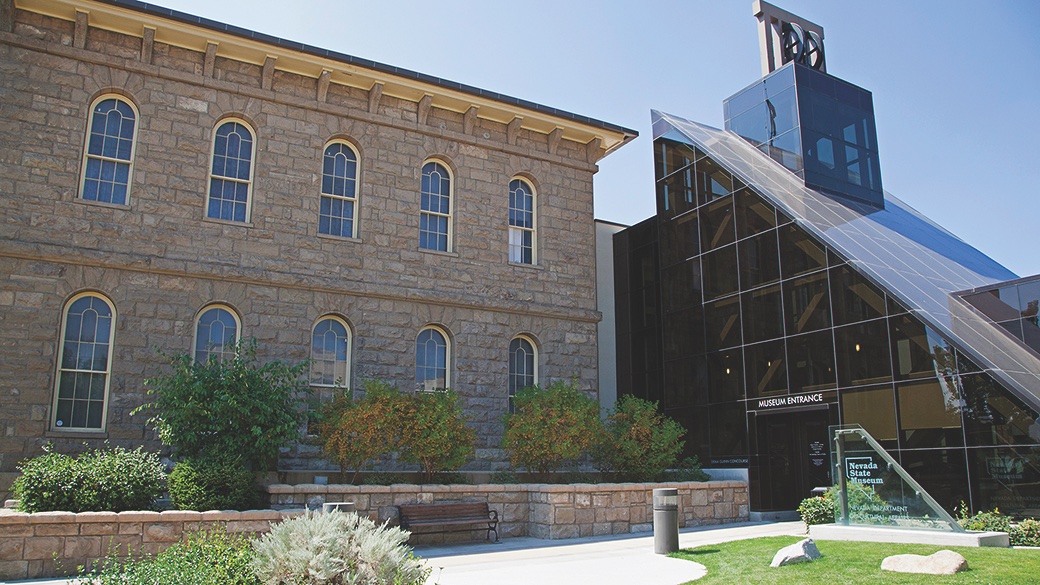
Modern Photo (above) Courtesy TravelNevada/Historic Image (below) Courtesy Library of Congress, c. 1930s

The museums of Carson City provide an excellent introduction to the state’s history and heritage and a long weekend in the nation’s smallest capital city gives the visitor time to visit the nearby historic towns of Virginia City, Genoa and Dayton.
The Nevada adventurer should be prepared for extremes in weather depending on the season, and be aware of the long distances between communities on U.S. Highways 50, 6 and 95.
Key Stops:
Carson City: The historic capital city of Nevada is the perfect place to kick off a road trip across the Silver State. Don’t miss a tour of the Nevada State Museum in the old U.S. Mint building, the Nevada State Railroad Museum and the state capitol grounds.
Virginia City: Stay and visit the historic, mother-lode boomtown of the Comstock Lode. With extra time, take a tour of nearby towns Genoa, Dayton and Fort Churchill State Historic Park.
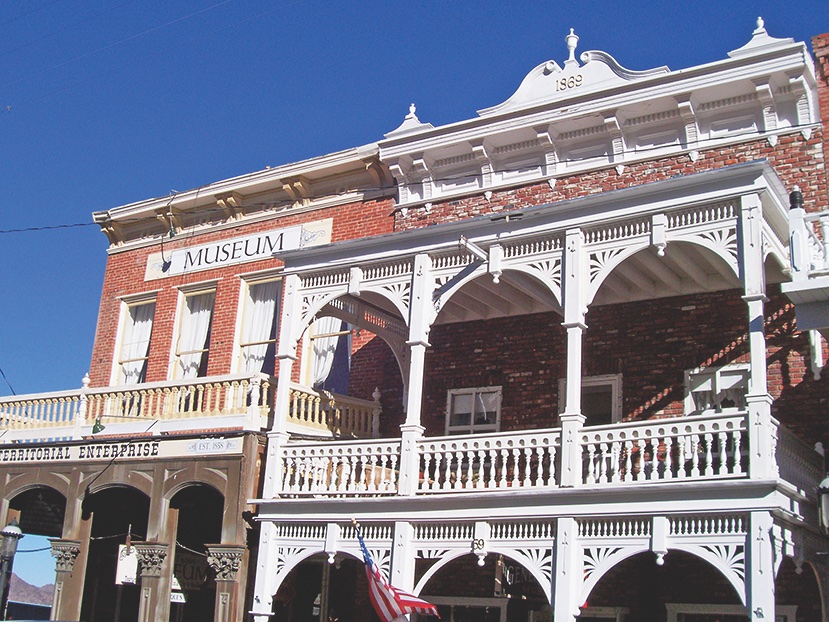
Fallon: At this gateway to historic U.S. 50, visit the Churchill County History Museum, Fort Churchill and the Pony Express sites between Fallon and Austin, home of Stokes Castle.
Eureka: Known as the “Friendliest Town on the Loneliest Road in America” the former mining boomtown’s 19th-century historic district is worth the stop. Make time to visit the Eureka Opera House, Raine’s Market and Wildlife Museum, the Jackson House Hotel and the Eureka Sentinel Museum.
Ely: A National Historic Landmark, the Nevada Northern Railway is one of the finest in the United States. Passengers can sign up for a special hands-on “Be the Engineer” program in which they drive the heritage train for two hours through Robinson Canyon toward the Old Ruth Mining district.
Lunar Crater Volcanic Field National Natural Landmark: Astronauts trained here in preparation for the moon landing; beware of high summer temperatures when on a tour along the Lunar Crater Backcountry Byway.
Tonopah: The great silver strike that fueled the growth of this mining camp over a century ago makes this town a history-lovers paradise with the fully restored Mizpah and Belveda Hotels, the Tonopah Mining Museum and a walkable historic downtown.
Websites: TravelNevada.com, NPS.gov and
FS.USDA.gov
The Desert Southwest
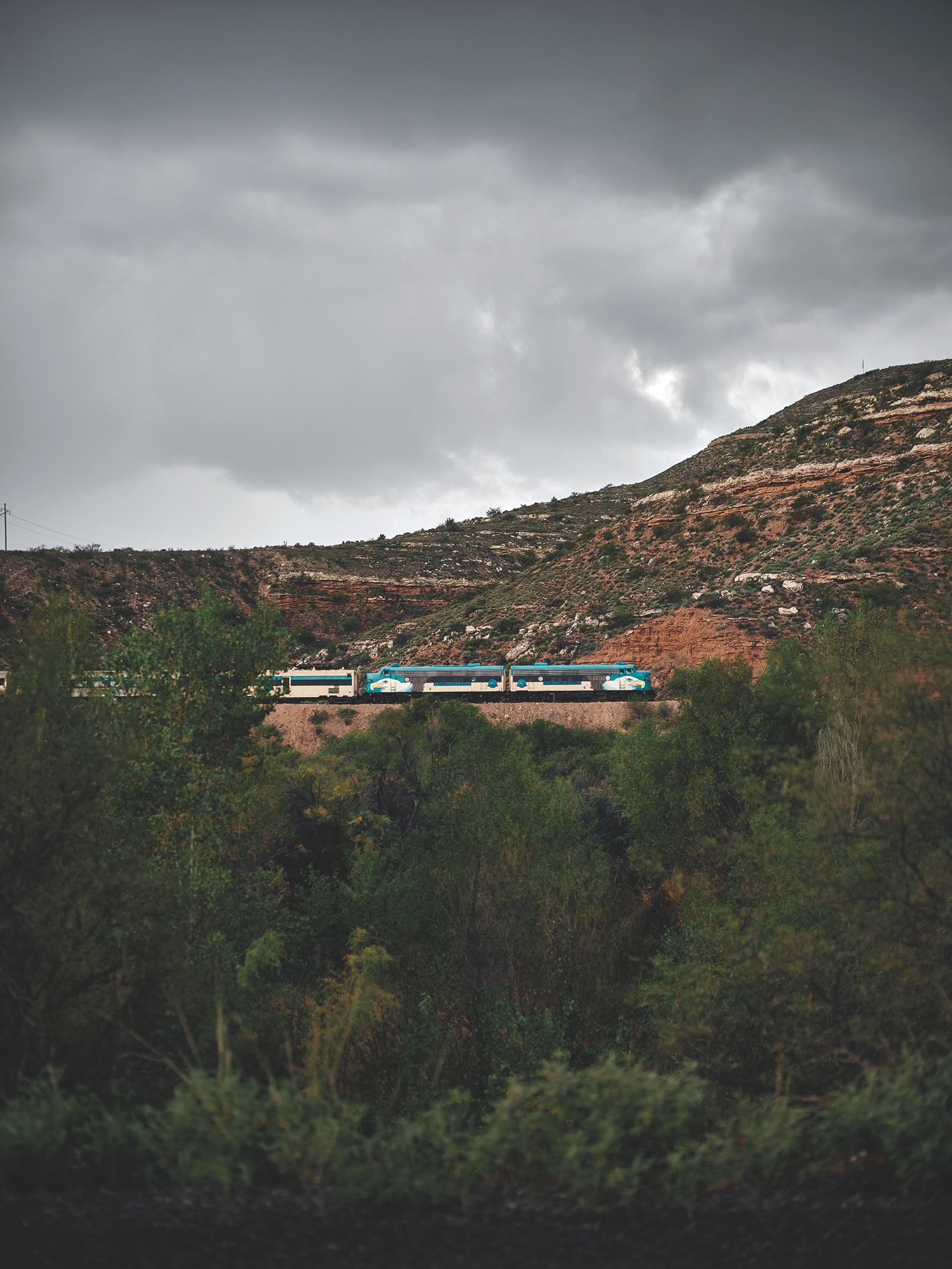
Explore Historic Northern Arizona
Small towns, scenic highways and historic sites await the adventurous traveler.
Arizona is a world-renowned destination for scenic road trips, and the options are many for the adventurous explorers looking to enjoy beautiful byways that lead to historic sites, great museums, small towns and national parks.
Start or end your tour of northern Arizona in Prescott, the original Arizona Territorial capital, current Yavapai County seat and the state’s centerpiece of Western heritage.
Summertime travel across the central highlands from Prescott to Flagstaff should be taken at a slower pace to enjoy the scenic state routes, like 89A, which switchbacks up and over the mountains through Jerome, Cottonwood, Clarkdale, Sedona and Oak Creek Canyon.
Cottonwood’s downtown district with boutique hotels, restaurants, bars and antique shops is a great overnight or weekend getaway. Go fishing at Deadhorse State Park or canoeing on the Verde River.
Check in with the Prescott, Coconino and Kaibab National forest ranger stations on the forests’ back roads and campgrounds.
Once in Flagstaff, enjoy the walkable historic downtown with its local shops, restaurants and bars. Spend a day or two before heading west on I-40 to Williams, one of the great railway and Route 66 towns in America.
To return to Prescott, continue west on I-40 to Ash Fork and a beautiful drive south on Arizona 89 to the mile-high city known best as “everyone’s hometown.”
Key Stops:
Wickenburg: Don’t miss a tour of Desert Caballeros Museum and the Hassayampa River Preserve.
Prescott: Experience this great city from which to start a tour of northern Arizona by booking a room at the historic Hassayampa Inn, within walking distance of the shopping district around the Courthouse Plaza, Whiskey Row, the Palace Restaurant and Saloon and Sharlot Hall Museum.
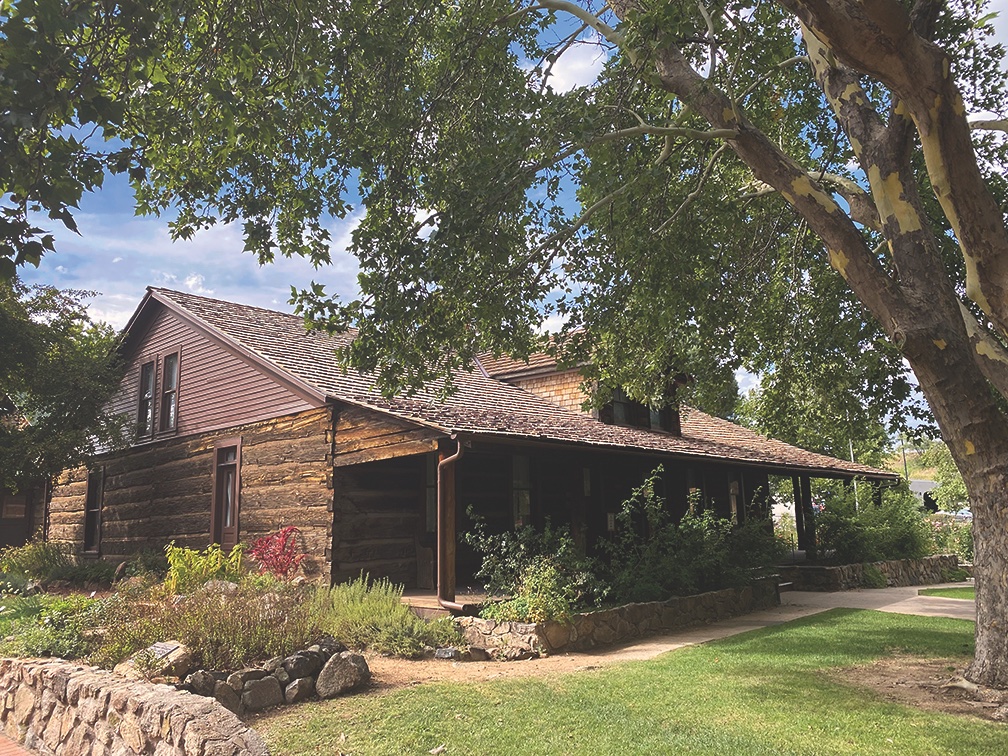
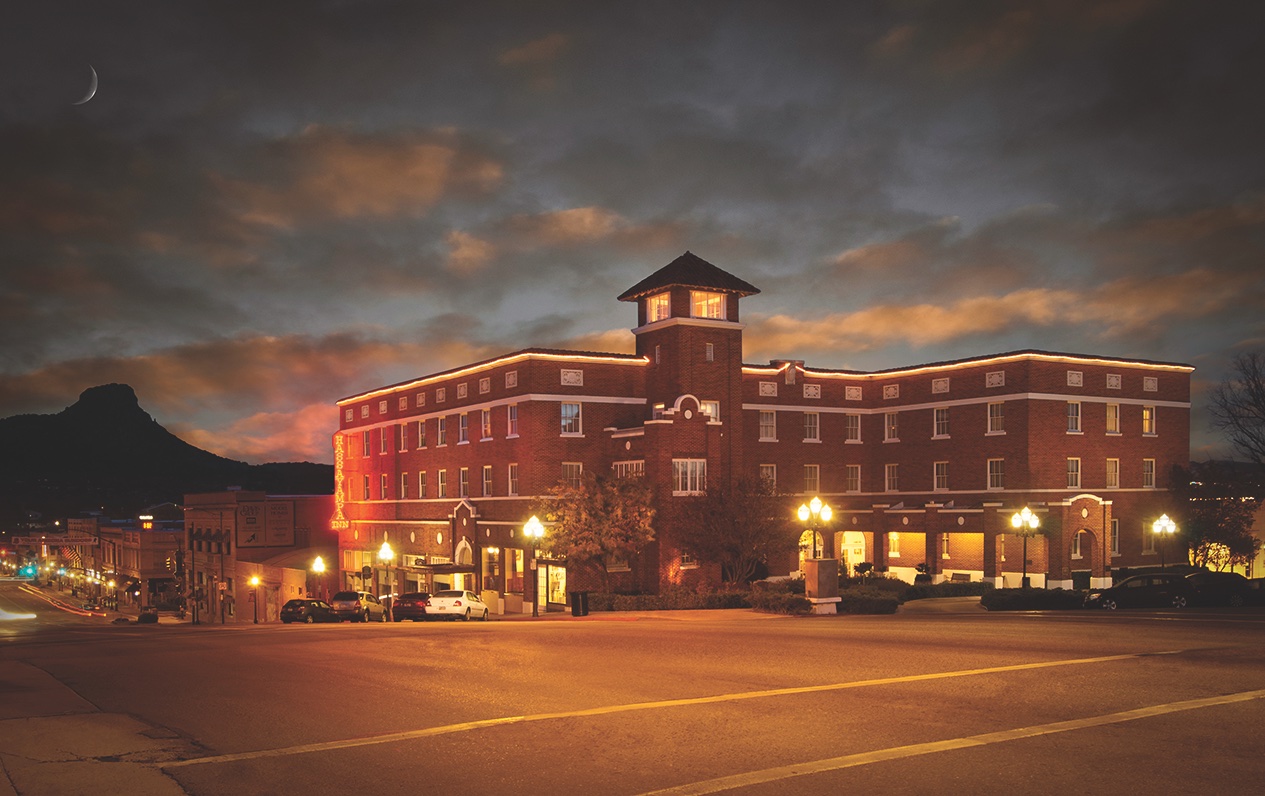
Jerome: A beautiful drive on State Route 89A from Prescott over Mingus Mountain leads to Jerome, one of the state’s most spectacularly located historic mining towns. Today its narrow streets are packed with art galleries, unique restaurants, hotels and inns.
Cottonwood: In the Verde Valley below Jerome, Cottonwood’s historic downtown should not be missed. Make time to visit Tuzigoot and Montezuma’s Castle national monuments, downtown Clarkdale and Fort Verde State Historic Park.
Sedona: In the heart of the state’s most beautiful Red Rock country, Sedona is an international destination. Drive 89A through Oak Creek Canyon to experience one of Arizona’s most beautiful scenic highways.
Flagstaff: The spectacular San Francisco Peaks rise above the city, which is home to Northern Arizona University, Museum of Northern Arizona, Lowell Observatory, Walnut Canyon, Sunset Crater and Wupatki national monuments.
Williams: The historic gateway to the Grand Canyon, Williams is a perfect place to enjoy a weekend along old Route 66. Take the Grand Canyon Railway to the South Rim and tour Bearizona, a unique wildlife park. Browse the local shops and try the restaurants on Main Street and then take a hike on nearby Bill Williams Mountain on the Kaibab National Forest.
Sidetrip: Route 66, Seligman to Kingman: West of Williams, exit I-40 at the Seligman exit and enter one of the great cities dedicated to the heritage of Route 66. Don’t miss a takeout meal at Delgadillo’s Sno-Cap Drive-In (and filling up the gas tank) before following 66 to Peach Springs, Hackberry, Valentine and the Mohave County Seat, Kingman. If driving from Las Vegas via Kingman, check in with the Kingman Visitor Center before heading out on Route 66.
Websites: VisitArizona.com, NPS.gov, FS.USDA.gov
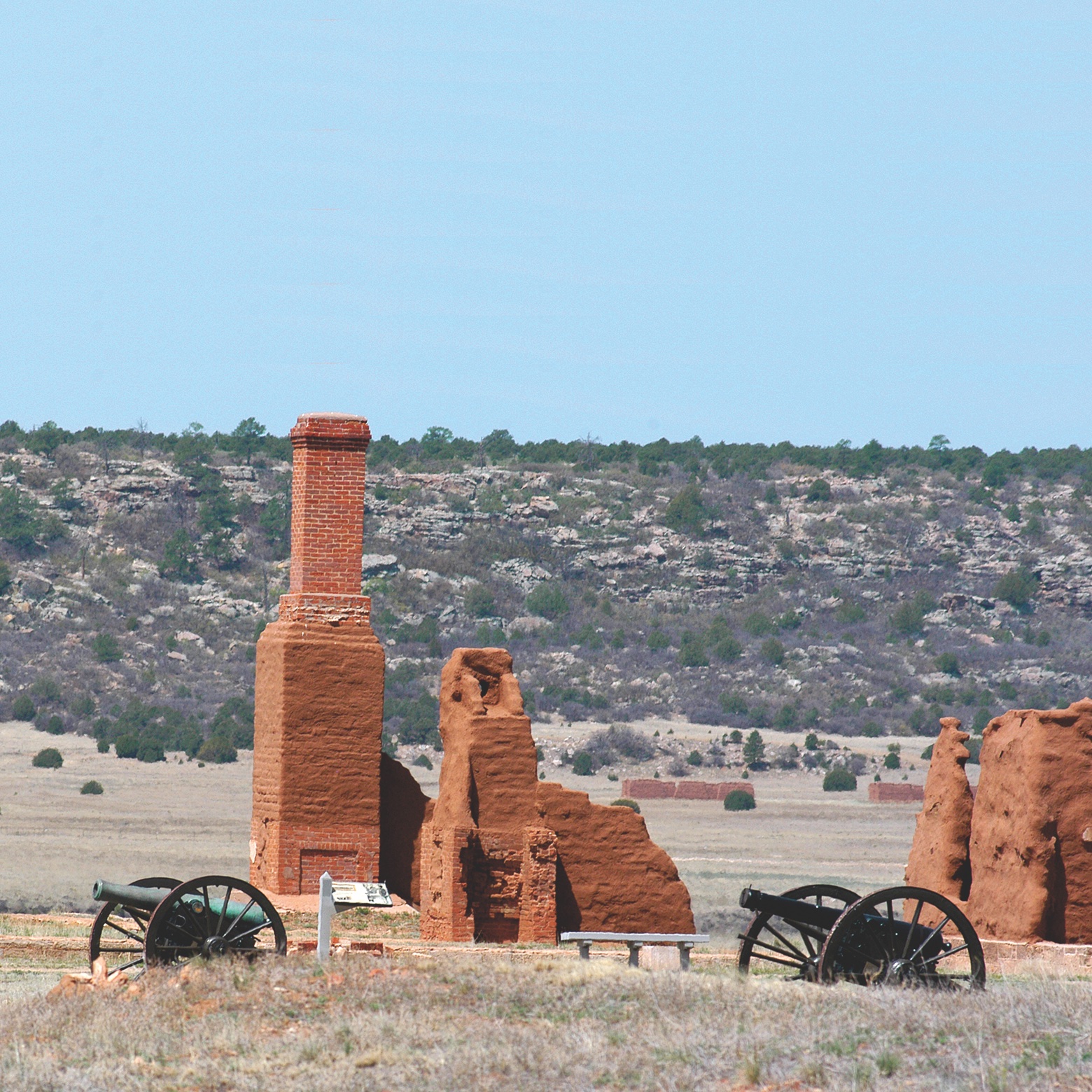
The Goodnight-Loving Trail
From Texas to New Mexico, discover the heritage of one of the greatest cattle trails.
Travelers to Texas and New Mexico quickly learn that the vistas and the roads go on forever in the two Southwestern states. The Lone Star State and the Land of Enchantment share a great deal of history and heritage (combined they are the size of some small European countries or four or five New England states), and for lovers of the American West they are destinations to return to again and again. A great way to discover Texas and New Mexico from the ground up is to retrace one of the great trails that helped build the two states after the Civil War, one of which is the Goodnight-Loving Trail from Texas to New Mexico.
The Goodnight-Loving Trail was founded in 1866 by Charles Goodnight and Oliver Loving and started in Young County west of Fort Worth. The two entrepreneurial cattlemen seized the opportunity to drive cattle from north-central Texas to New Mexico’s Pecos River Valley. Soon the Texans discovered a need for cattle farther north in Colorado and beyond and drove herds north all the way to Cheyenne, Wyoming. (Larry McMurtry loosely based Lonesome Dove on these two Texans.)
Following the Goodnight-Loving Trail is definitely not a day trip, unless you do segments of it from where you live, so make sure to schedule at least a week to 10 days to explore the many historic towns and sites along the highways and byways between Fort Worth, Texas, and Raton, New Mexico.
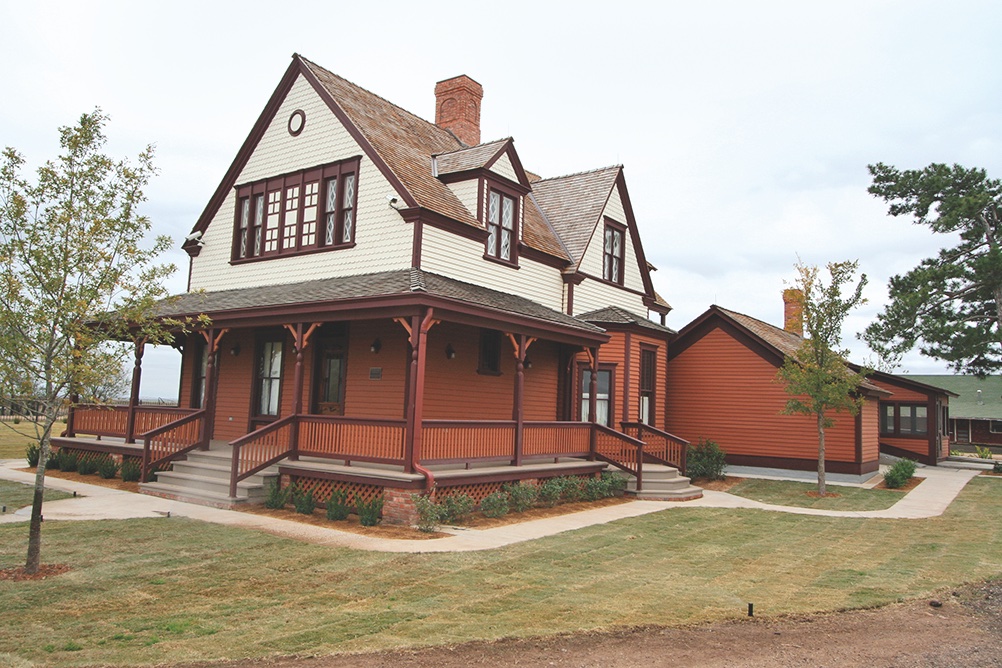
Key Stops:
TEXAS
Fort Worth: The Historic Fort Worth Stockyards is a great place to start a tour across Texas and New Mexico visiting the historic sites of the Goodnight-Loving Cattle Trail.
Fort Belknap: Built in 1851, and rebuilt near its original foundations in the 1930s, the fort is maintained as a museum near Newcastle. The isolated Army base was home to the 2nd Cavalry when the stage line was in operation between 1858 and 1861.
Abilene: In 1881, the city was founded at a new railhead and became a major shipping point for cattle. Don’t miss a tour of Frontier Texas!, one of the premier Western heritage museums in the Lone Star State.
Fort Chadbourne: The Army opened the post in 1852 to protect travelers and citizens living on the Texas frontier, and it served as a station for the Butterfield Overland Mail Company. Today, the fort is a Texas State Historical Site, with a visitor center, museum and six restored buildings.
Claude: Take a side trip to Claude to visit the Charles and Mary Goodnight Ranch State Historic Site.
Bandera: Don’t miss a chance to visit the self-declared “Cowboy Capital of the World” located in the beautiful Texas Hill Country.
San Angelo: This town is home to Fort Concho National Historic Landmark and the long-term home of Western writer Elmer Kelton. Don’t miss a day walking through historic downtown and a visit to the Cactus Bookshop.
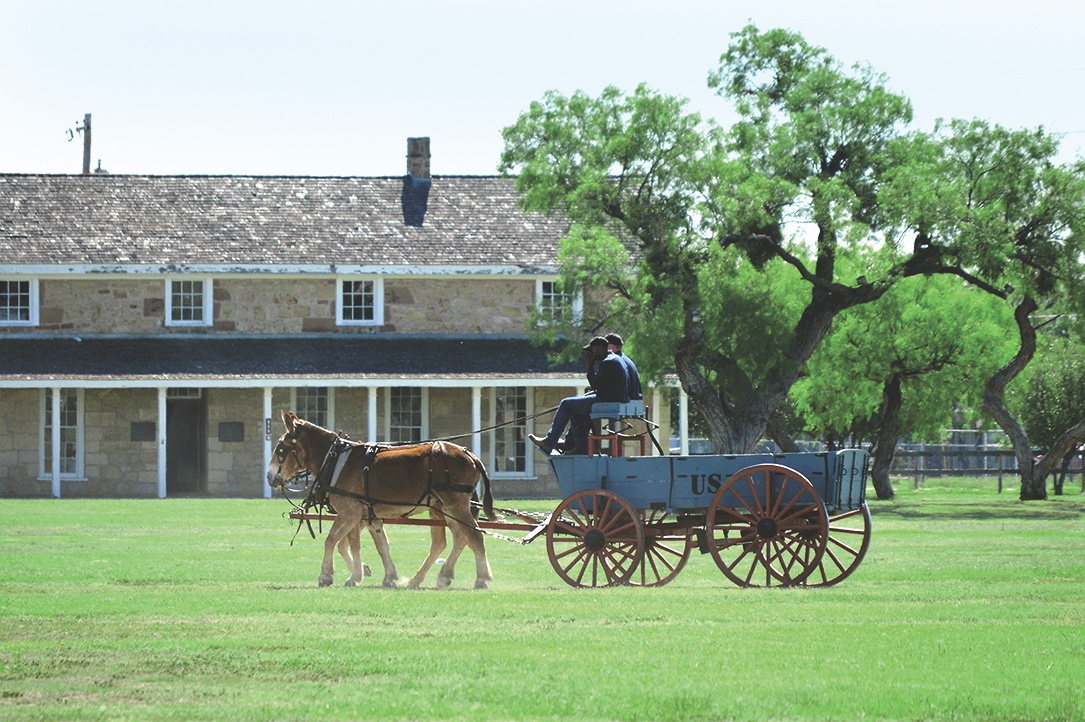
Fort Stockton: Established in the spring of 1859 adjacent to Comanche Springs, Fort Stockton became a key post on the southern plains of West Texas. Schedule time to tour Historic Fort Stockton, the Annie Riggs Memorial Museum and the Mesa Vineyard & Tasting Room.
Horsehead Crossing: A historic marker tells the story of the key crossing of the unpredictable river 17 miles north of Girvin, via U.S. 385/67 to FM 11 W toward Imperial to Horse Head Road, which dead-ends at the marker and the river.
Pecos: The historic West Texas town on the Goodnight-Loving Trail is located on the west bank of the Pecos River and has one of the best local history museums in the region. Pecos is also home to the West of the Pecos Rodeo, first held in 1883.
Fort Davis: Fort Davis National Historic Site, southwest of Pecos and Fort Stockton, is the best-preserved Texas frontier fort in the Lone Star State and offers living history events throughout the year.
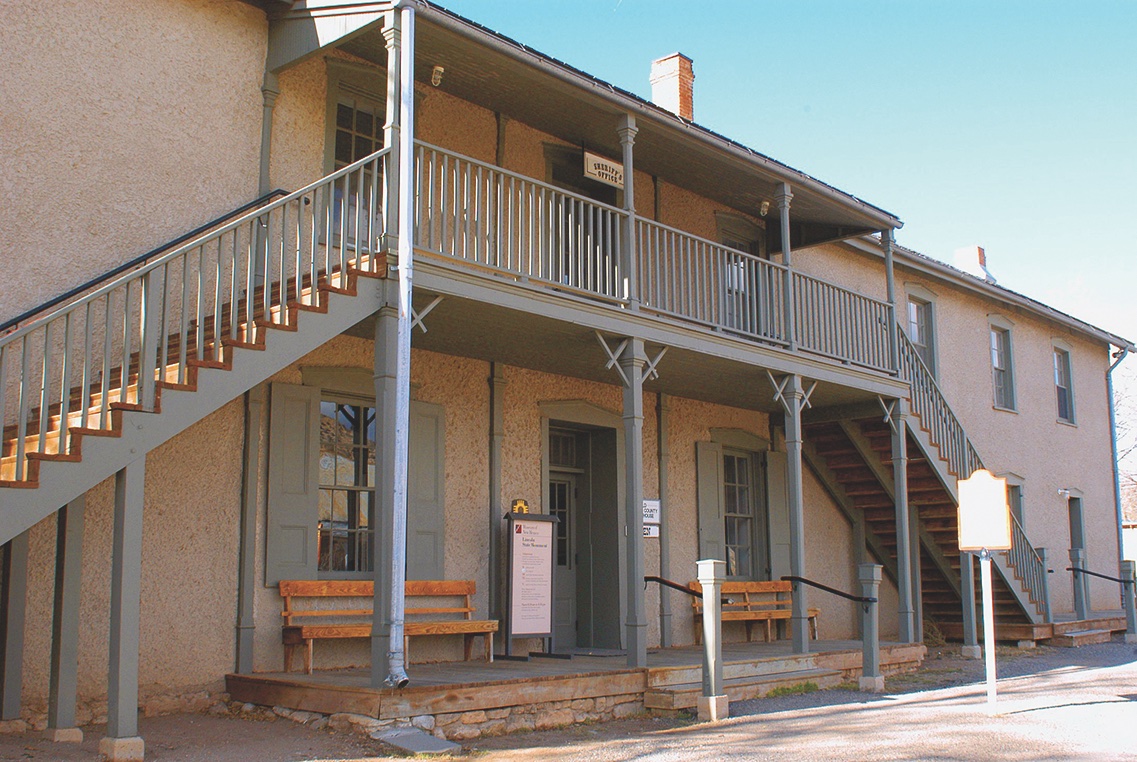
NEW MEXICO
Carlsbad: Staying on U.S. 285 north from Pecos, take a side trip to Carlsbad Caverns National Park.
Lincoln: Staying on U.S. 285 north through Artesia and Roswell, take a side trip to Lincoln on U.S. 380. Explore the historic sites in the town that Billy the Kid made famous in the Lincoln County Cattle War.
Fort Sumner: The Army needed beef to feed the Navajos at Bosque Redondo, and Oliver Loving and Charles Goodnight drove their herd of 2,000 head of cattle to Fort Sumner in the summer of 1866. Don’t miss the grave of Billy the Kid and the Fort Sumner Historic Site.
Las Vegas: In 1866, Oliver Loving pushed the trail north from Fort Sumner and followed the Pecos north to Las Vegas. The Historic Plaza Hotel is an excellent place to stay while enjoying the city’s history and heritage.
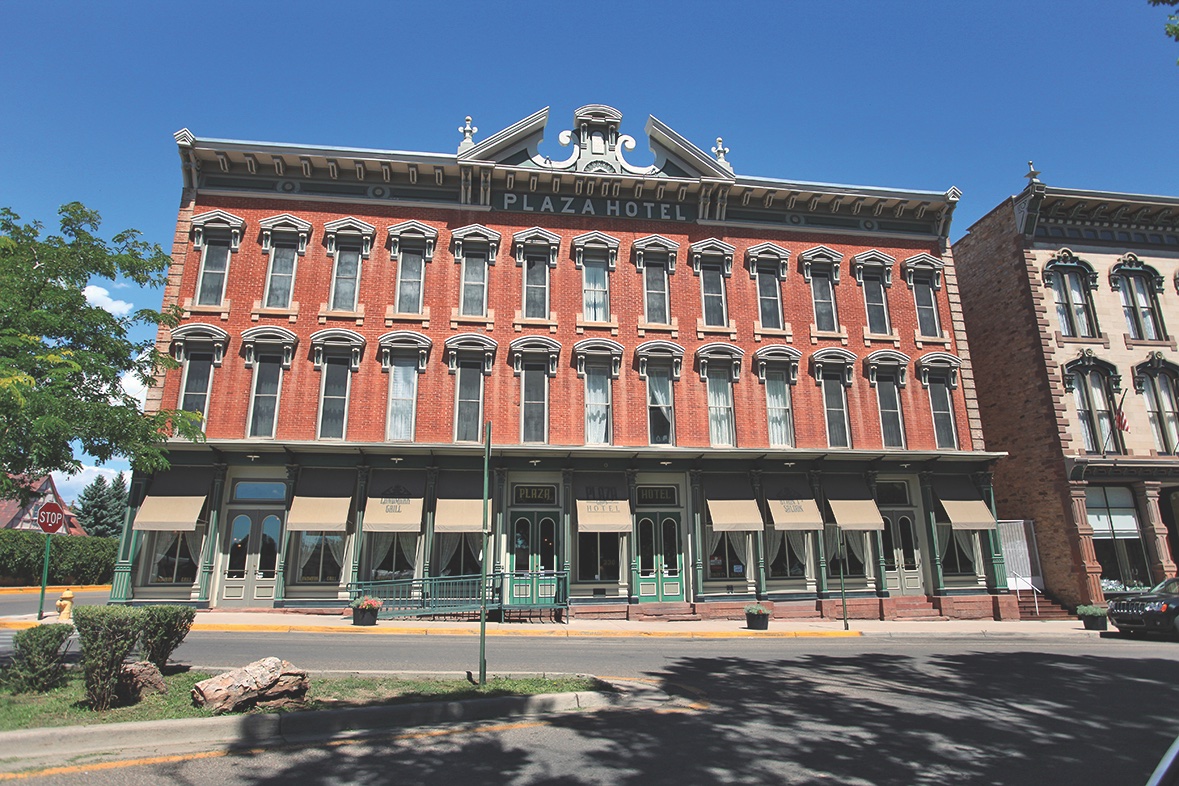
Fort Union National Monument: The Goodnight-Loving Trail went north to the fort and would have been a good way-stop as it was built at the crossroads of the Mountain and Cimmaron Cutoff branches of the Santa Fe Trail.
Raton: A key Santa Fe Trail town, Raton is the gateway city to Raton Pass and the mountain branch of the famous transcontinental trail, which in 2021-22 is being celebrated in communities along the route from Missouri to New Mexico.
Websites: VisitTexas.com, TPWD.Texas.gov, NewMexico.org, NPS.gov and FS.USDA.gov
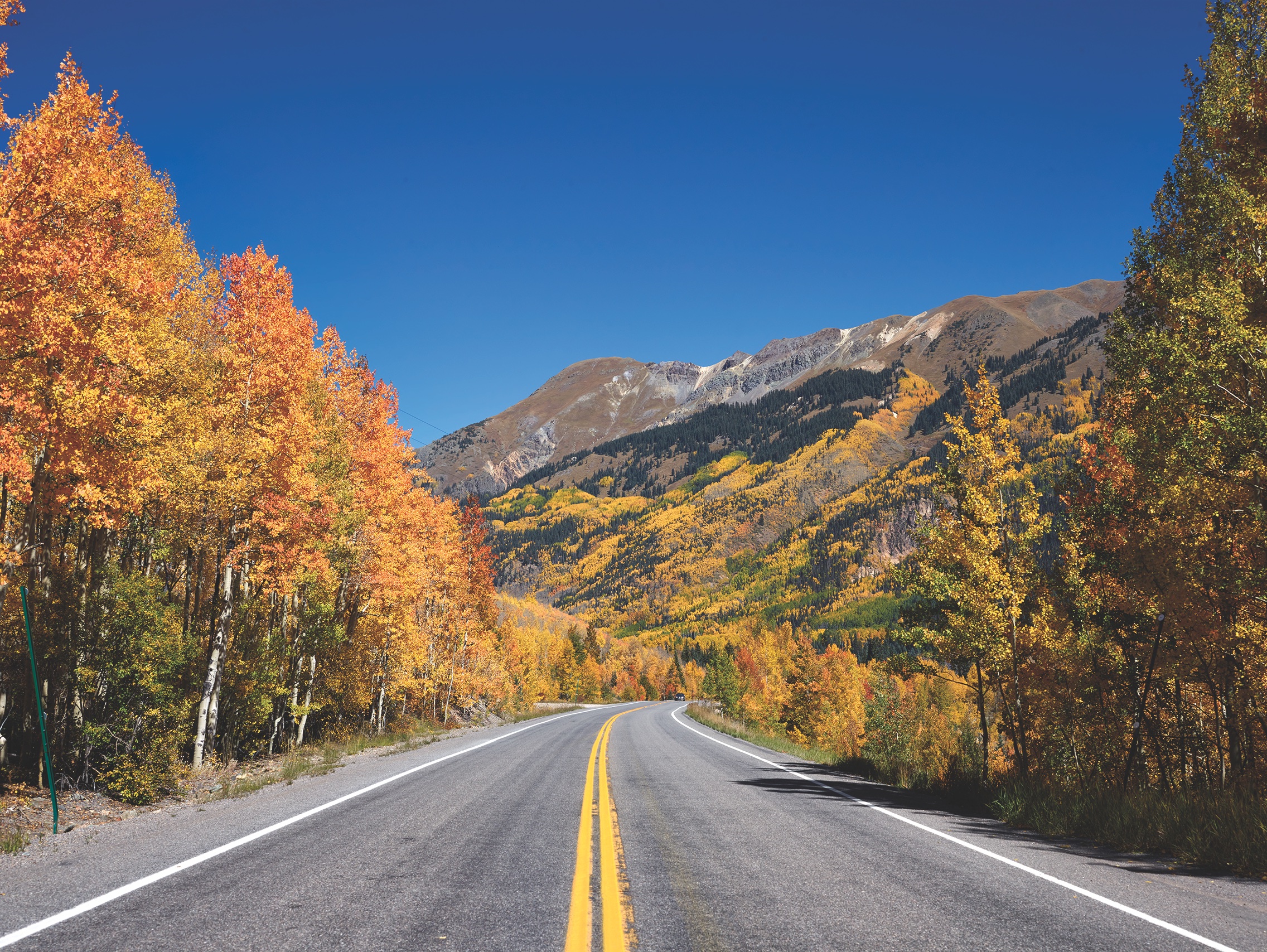
Great Basin and Rocky Mountains
Outlaws, Railroads and Gold
Discover Colorado’s rich history in a cross-state adventure.
Colorado conjures up romantic visions of the Rocky Mountains, snowcapped peaks on the horizon, Western mining towns, high country parklands and endless plains and valleys with unmatched vistas. Many spend a lifetime exploring the mountainous state, driving its scenic roads, visiting its historic towns, hiking its peaks and fishing its world-class trout streams. For the Western tourist seeking a new way to see Colorado, a great route begins in the southwestern corner of the San Juan Mountains and crisscrosses the state on scenic highways over numerous high-elevation mountain passes to the state’s capital city of Denver.
While the route from Durango to Denver can be driven in a day, a week to 10 days will allow time to savor the historic sites (and sights) and stay overnight or for a weekend in some of Colorado’s most picturesque communities along the way. And, if you like combining your love of scenic byways with mining and railroad history, then the mountainous drive from the alpine San Juans across the Continental Divide to Rocky Mountain National Park will never be forgotten.
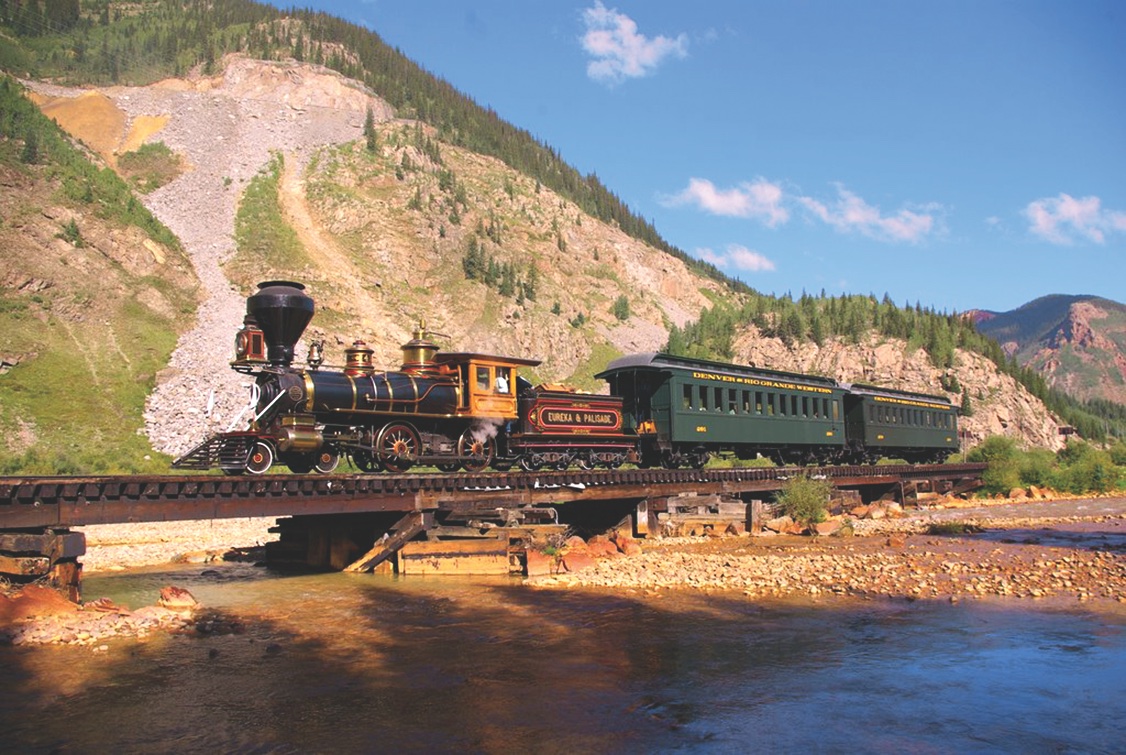
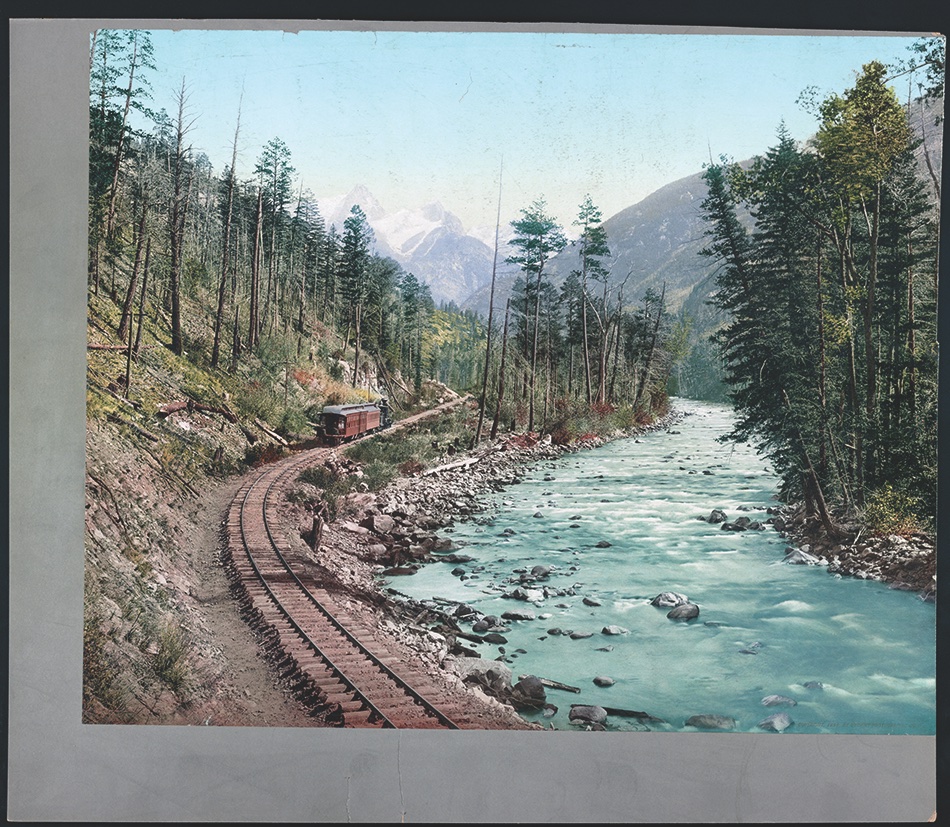
Key Stops:
Durango: Book a room at the historic Strater Hotel and immerse yourself in the lively downtown atmosphere of the mountain town. Book in advance a round trip on the Durango-Silverton Narrow Gauge Railroadfor an unforgettable experience.
Silverton: Whether arriving by train or car (or on foot if an adventurous backpacker), Silverton never disappoints. Stroll the historic mining town and spend the weekend at an elevation of 9,318 feet.
Ouray: Enjoy the historic downtown, local mine tours and then a soak in the famous hot springs.
Lake City: If you like high mountain passes and narrow scenic roads, then don’t miss a chance to drive (carefully) the backroads from Silverton or Ouray to Lake City and its National Historic District. Ask locally about road conditions and closures, especially in winter.
Gunnison: From this gateway to recreation in the Rockies, take the back roads to Crested Butte and the Ruby Range. To reach Lake City from Gunnison take state highway 149 south.
Leadville: In the highest city in America at 10,151 feet, enjoy the historic downtown and a spectacular ride on the Leadville, Colorado & Southern Railroad.
Georgetown: If you love picturesque Colorado mountain towns and railroads, book a stay in town and take a ride on the historic Georgetown Loop Railroad.
Rocky Mountain National Park: A highlight of the cross-state tour, the popular national park has created a reservation system for visitors. Check with the park for current restrictions.
Golden: This town is home to the Colorado School of Mines, Coors Beer, the Colorado State Railroad Museum and Buffalo Bill Museum and Grave.
Denver: The state capital is home to the Colorado History Center, Denver Art Museum and the great archives at the Denver Library. Denver is a great place to start or end a trip to the Rocky Mountain State.
Websites: Colorado.com, NPS.gov and
FS.USDA.gov
High Lonesome
A dramatic tour of northern Wyoming and southern Montana makes an unforgettable trip.
Internationally, Wyoming and Montana are synonymous with the Wild West. From their historic towns of Buffalo, Sheridan and Cody, Wyoming, to Montana’s Red Lodge, Billings and Little Bighorn to the natural wonders of Yellowstone and Grand Teton national parks, the Cowboy and Big Sky states offer a firsthand Western experience.
On this cross-border tour of the two Rocky Mountain states, visitors will discover pioneer and Indian culture, endless vistas of snowcapped mountains and scenic byways. Visitors who immerse themselves in the communities they tour will quickly discover the two states’ wonderful historic sites, museums, charming hotels and Western bars. Summertime also means fun-filled local celebrations with some of the West’s most prestigious rodeos and Western parades.
A hallmark of Wyoming and Montana travel are the long, beautiful drives with scenic byways in almost every direction off the interstates.
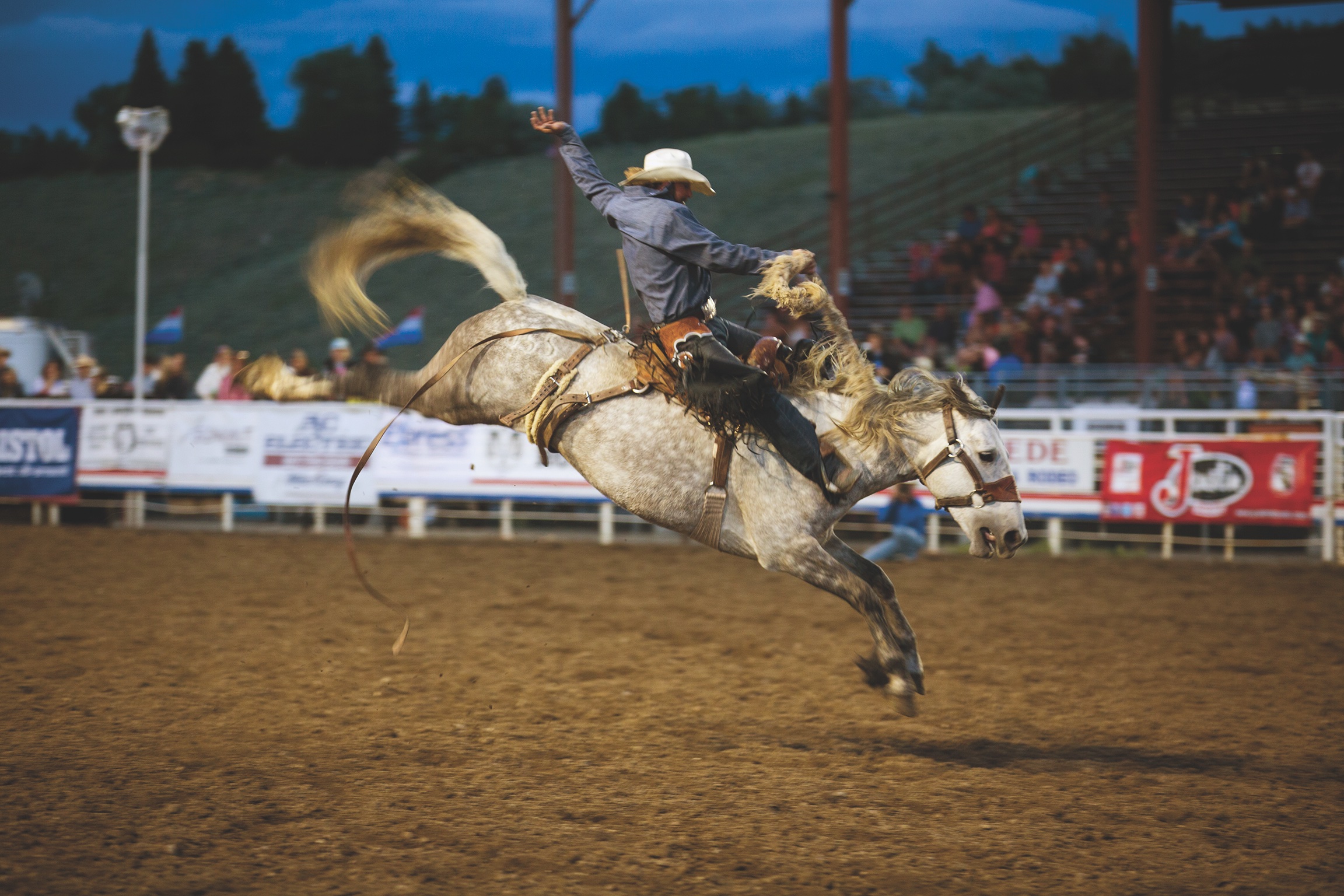
Key Stops:
WYOMING
Buffalo: The historic community is home to the famous Occidental Hotel, a favorite of many famous and infamous guests, including Owen Wister and Butch Cassidy. Tour the Jim Gatchell Memorial Museum and take a picnic up the scenic Crazy Woman Canyon Road.
Kaycee: If time allows, take a side trip south from Buffalo to visit the TA Ranch and eat at the Invasion Bar and Restaurant. Ask locally for directions to Hole-in-the-Wall on BLM lands.
Big Horn Mountains: From Buffalo, take scenic U.S. 16 via Ten Sleep to Worland, a crossroads community on U.S. 16-20/S.R. that leads north to Greybull or south to Thermopolis.
Thermopolis: Stay a night and soak in the famous hot springs at this historic crossroads of U.S. Highway 20 and State Highway 120.
Cody: Home to the Buffalo Bill Center of the West, a Smithsonian-style complex of five museums, the town is also home to Buffalo Bill’s Historic Irma Hotel. Book a room and relax for a long weekend of touring the local natural wonders and museums.
Sheridan: The largest city near the Little Bighorn Battlefield National Monument, Sheridan is a perfect headquarters at the end of the two-state tour in which to relax and enjoy the historic Sheridan Inn, downtown’s shopping district, including King’s Ropes and the Mint Bar, the Brinton Museum in Big Horn and Fort Phil Kearny State Historic Site.
MONTANA
Beartooth All-American Highway: From Cody, Wyoming, take state 296 toward Yellowstone National Park’s northeast entrance at Silver Gate (closed in winter) to U.S. 212, the Beartooth Highway. The spectacular mountain route is considered the most beautiful highway in America.
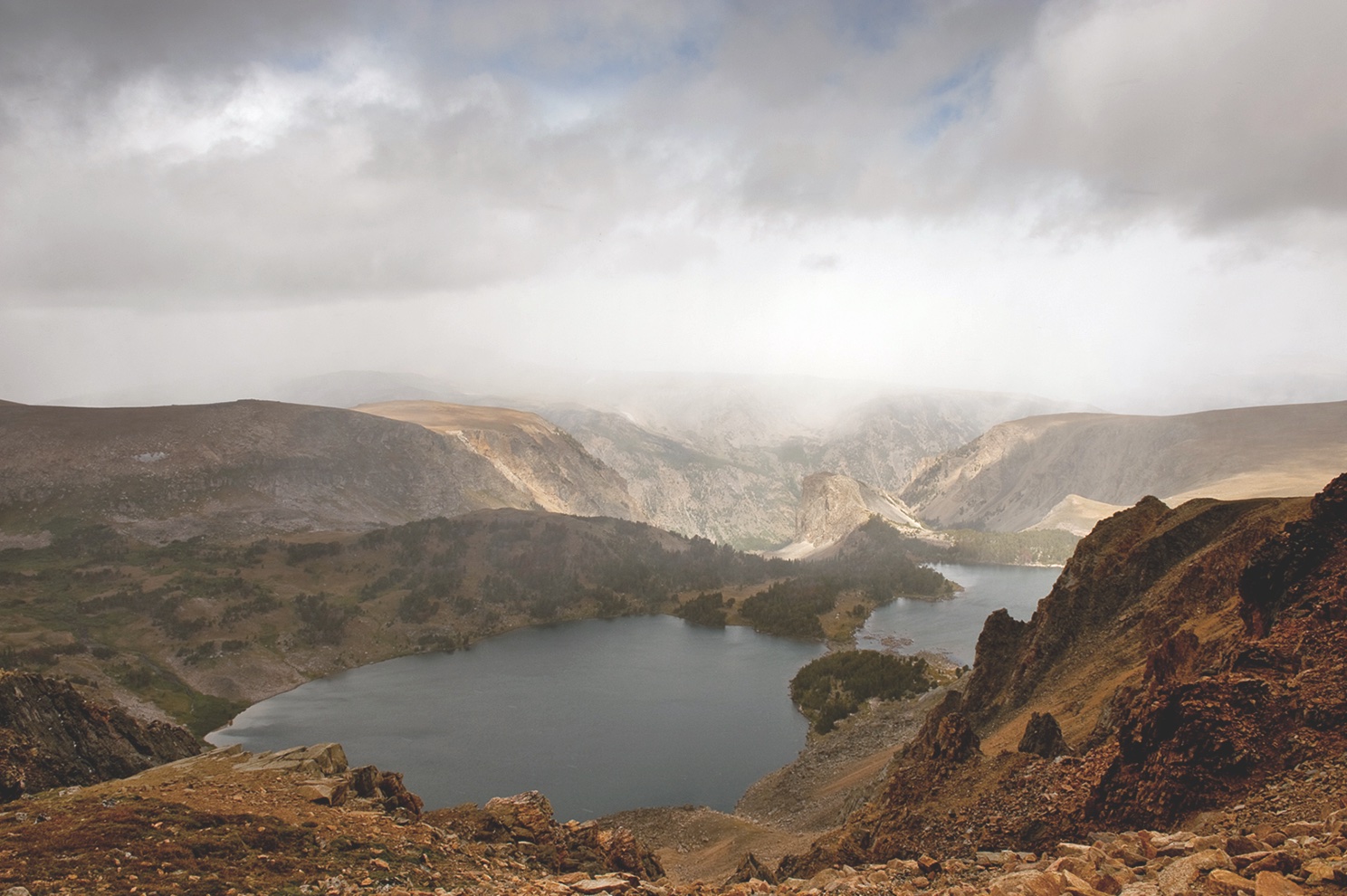
Red Lodge: The Montana gateway to the Beartooth Highway, the quaint downtown is a great place to spend a day exploring. Don’t miss the Carbon County Historwical Society & Museum.
Billings: The unofficial capital of southeastern Montana’s river and prairie country, Billings is a gateway city to Yellowstone and Little Bighorn Battlefield National Monument. Don’t miss a tour of the city’s Western Heritage Center.
Little Bighorn National Historic Battlefield, Crow Agency: Schedule enough time to visit the most significant battlefield in the Western United States, including its museum, cemetery, cavalry and Indian monuments and to take a self-guided driving tour of the solemn park.
Garryowen: The Custer Battlefield Museum is a must stop on a tour of southeastern Montana.
Rosebud Battlefield State Park: Go east from the Crow Agency on U.S. 212 to Busby, and south on county 314, to the site of the key battle that proceeded Little Bighorn.
Websites: TravelWyoming.com, VisitMT.com, NPS.com and FS.USDA.gov
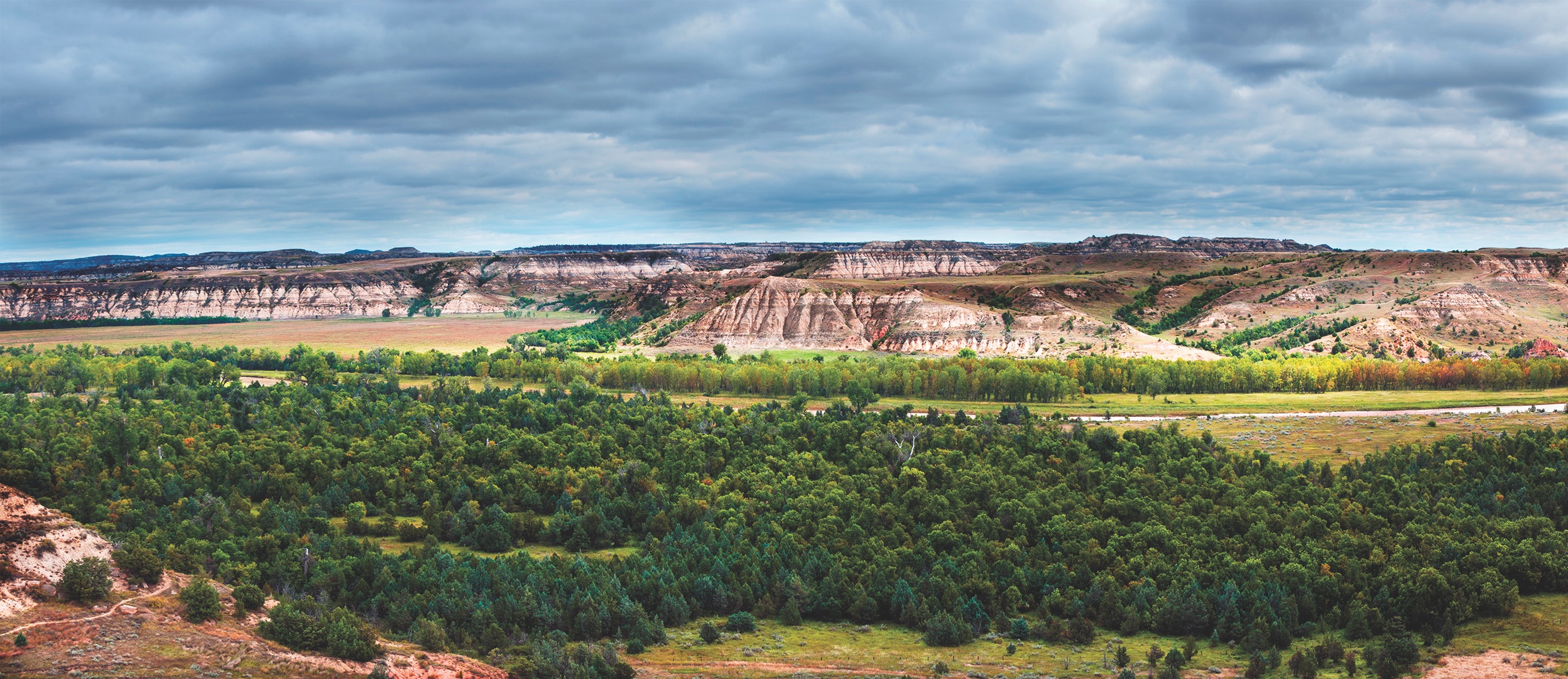
Northern Prairie and Plains
The Wondrous Western Lands of the Dakotas
A tour of the mountains, badlands and parks of the two states is a natural road trip.
An extended tour of South and North Dakota’s western quarters is breathtaking from the Black Hills and Badlands National Park in the south to the Little Missouri River Badlands and Theodore Roosevelt National Park in the north. U.S. Highway 85 is your main highway between the two scenic destinations with beautiful, lightly populated high plains—and unique historic destinations—between them. Don’t miss a chance to visit the geographic center of all 50 American states, just 20 miles north of Belle Fourche.
Once joined together as the Dakota Territory, South Dakota and North Dakota, two distinctive states, have many historic sites, communities and natural wonders. Travelers crossing the high plains west of Minnesota will traverse the two sister states on one of the major interstates that bisect them east to west. But a tour of the western quarter of each state, beginning in South Dakota’s Black Hills and Badlands north to North Dakota’s Badlands and Theodore Roosevelt National Park, will prove to be one of the most enjoyable and revealing road trips across the Dakotas.
Travelers who choose to make the trip north from the Black Hills should schedule two weeks for their tour—at a minimum—and possibly more, if after reaching the confluence of the Yellowstone and Missouri rivers, the Big Sky country of Montana harkens a lengthier trip.
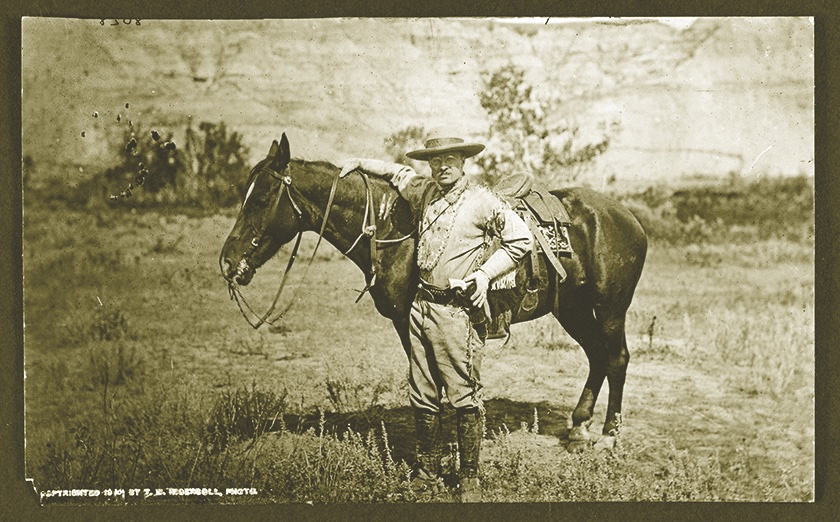
Key Stops:
SOUTH DAKOTA
Deadwood: Make the historic Bullock Hotel your headquarters in Deadwood for touring the North Hills. Enjoy walking the historic streets of downtown—made famous by Seth Bullock, Wild Bill Hickok and Calamity Jane—as well as visiting the city’s many museums, including the Adams and Days of ‘76.
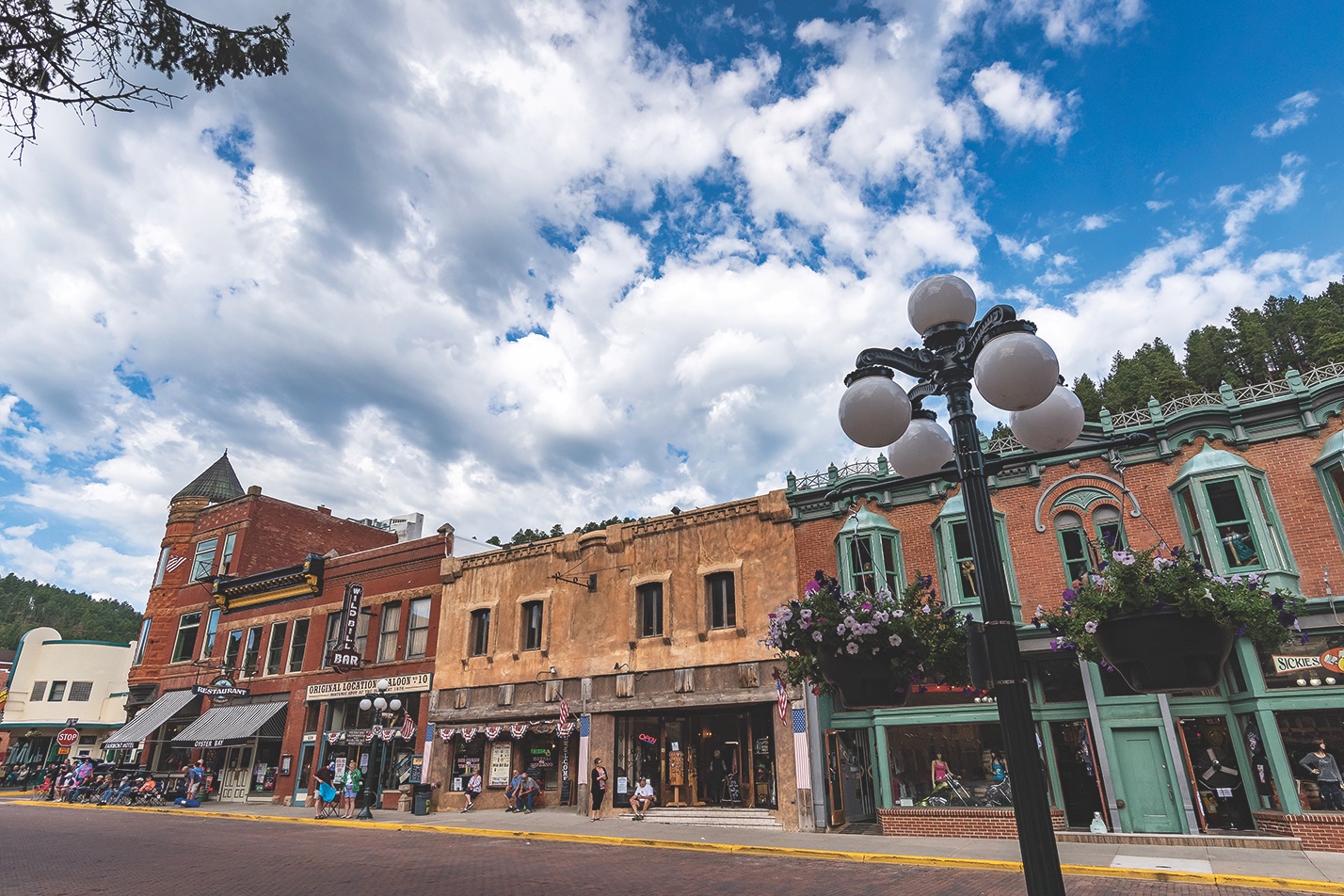
Lead: Looking for a little less crowded atmosphere than Deadwood, but still in a historic city in the North Hills? Try Lead, just south on U.S. 85 from the famous boomtown. Enjoy downtown and its Black Hills Mining Museum adjacent to the Homestake Mine.
Rapid City: The largest city in the Black Hills region, Rapid City is a wonderful place to stay to explore the hills and the surrounding area. Don’t miss the world-class Journey Museum and Learning Center. A great side trip is State Highway 44 to Badlands National Park.
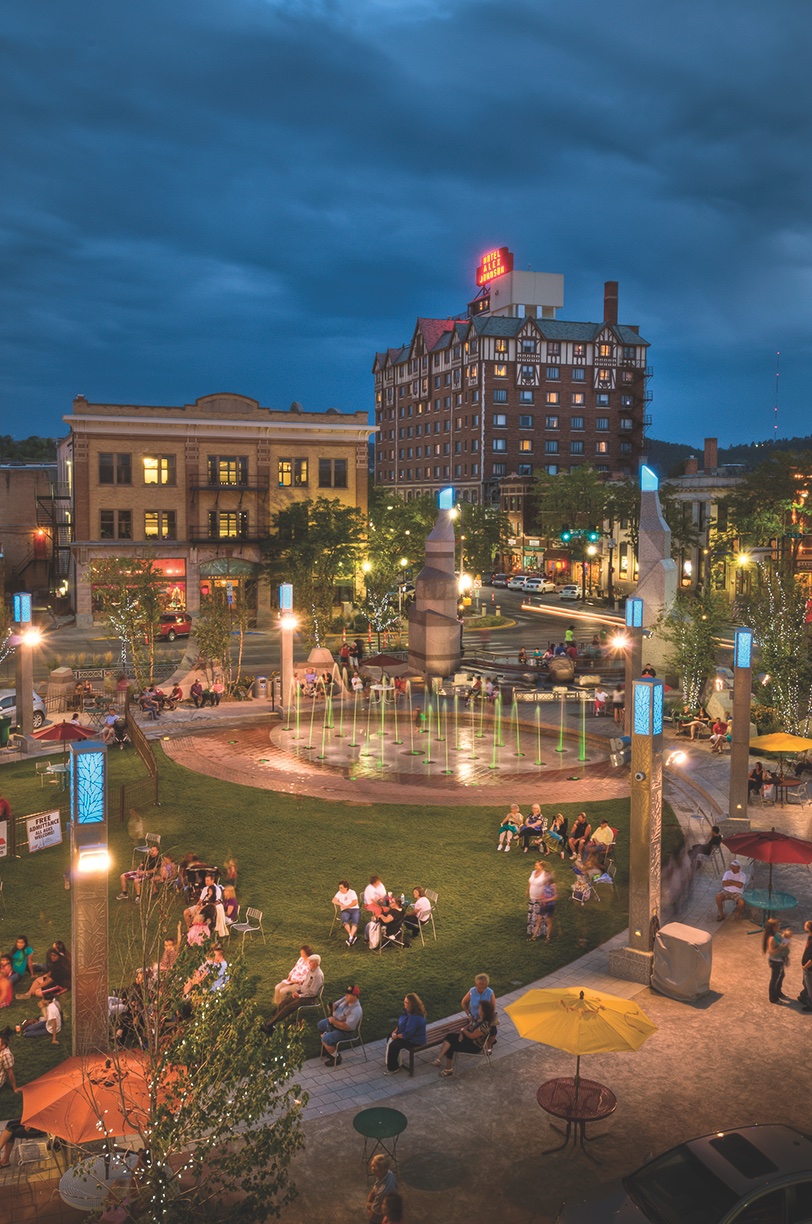
Spearfish: North of Deadwood on U.S. 85 and I-90, the ranching and farming community of Spearfish has one of the best museums in the area—the High Plains Western Heritage Center. When returning to Deadwood, take the long way on U.S. 14A up Spearfish Canyon to experience one of the most beautiful scenic highways (take your time) in the Black Hills.
Belle Fourche: North of Spearfish, Belle Fourche is the geographic center of the United States. Seth Bullock was one of the founders of the ranching community, anticipating the need for a railhead in the area. The Tri-State Museum expertly tells the local history and has a beautiful monument dedicated to the geographic center of the U.S.
Custer: A gateway city to the South Hills, the town is a great place to stay while touring the scenic region, Mt. Rushmore, Crazy Horse Memorial and Custer State Park, 14 miles east on U.S. 16A. While in the South Hills, don’t miss a drive on spectacular State Route 87, the Needles Highway.
Slim Buttes Battlefield Monument: East of Buffalo near Reva on State Route 20, a monument at the site commemorates the U.S. Army’s battle with the Sioux on September 9, 1876.
NORTH DAKOTA
Bowman: Schedule time to tour the Pioneer Trails Regional Museum, just across the border from South Dakota.
Dickinson: Spend a weekend in the gateway city to North Dakota’s Badlands. West of Bismarck on Interstate 94, Dickinson is home to the Theodore Roosevelt Center at Dickinson State University and the Dickinson Museum Center.
Medora: A centerpiece of summer tourism in the Peace Garden State, Medora is home to Theodore Roosevelt National Park, Pitchfork Fondue and the Medora Musical, North Dakota Cowboy Hall of Fame, Chateau de Mores, Billings County Museum and the Painted Canyon Visitor Center.
Theodore Roosevelt National Park: The vast and wild park protects the badlands of the Little Missouri River. Home to wild horses and bison, the park is divided into three units, with the most developed visitor sites at the South Unit. Fans of the cowboy president should take the time to visit his ranch site on the Elkhorn Ranch Unit.
Watford City: Visitors to the North Unit of Theodore Roosevelt National Park take U.S. 85 north to the welcoming town of Watford City—a great place to stay and explore the area.
Williston: Just east of the Montana border off U.S. 85, the city is a destination site for followers of the Lewis & Clark National Historic Trail. Count on spending a couple of days touring Fort Union Trading Post National Historic Site, Fort Buford State Historic Site (site of the surrender of Sitting Bull) and the Missouri-Yellowstone Confluence Interpretive Center.
Websites: TravelSD.com, NDTourism.com, NPS.gov and FS.USDA.gov
The Mississippi’s Great River Road
Travel from St. Louis to Minneapolis-St. Paul and discover the heritage of America’s greatest river.
For many the West begins at the Mississippi River, but while national trail tours focus mostly on routes that go east to west (or vice versa), the intrepid traveler curious about the history of the great Mississippi will want to schedule a tour from St. Louis to Minneapolis-St. Paul. The northern half of the great river will inspire rereading of Mark Twain’s classics and establish a greater understanding of the importance of the river to North American history from ancient history to the present.
The Great River Road National Scenic Byway from St. Louis weaves back and forth between Missouri, Illinois, Iowa, Wisconsin and Minnesota, but most of this tour will remain on the western bank of the river in Missouri, Iowa and Minnesota. For many, driving the scenic byway is a lifetime dream, but doing it in segments, state by state or north and south, makes it more manageable as there are so many stops and towns along the way to visit on the legendary river, the longest and largest continental river system of North America.
Key Stops:
MISSOURI
St. Louis: The Gateway Arch National Park is a bucket list item for anyone who visits the historical city at the confluence of the Missouri and Mississippi rivers. Stay a long weekend and enjoy the food, culture, music and history of the Western gateway city.
Hannibal: Mark Twain’s hometown, what more can be said? Stay a couple days and explore the river and the sites that inspired the writer’s greatest works.
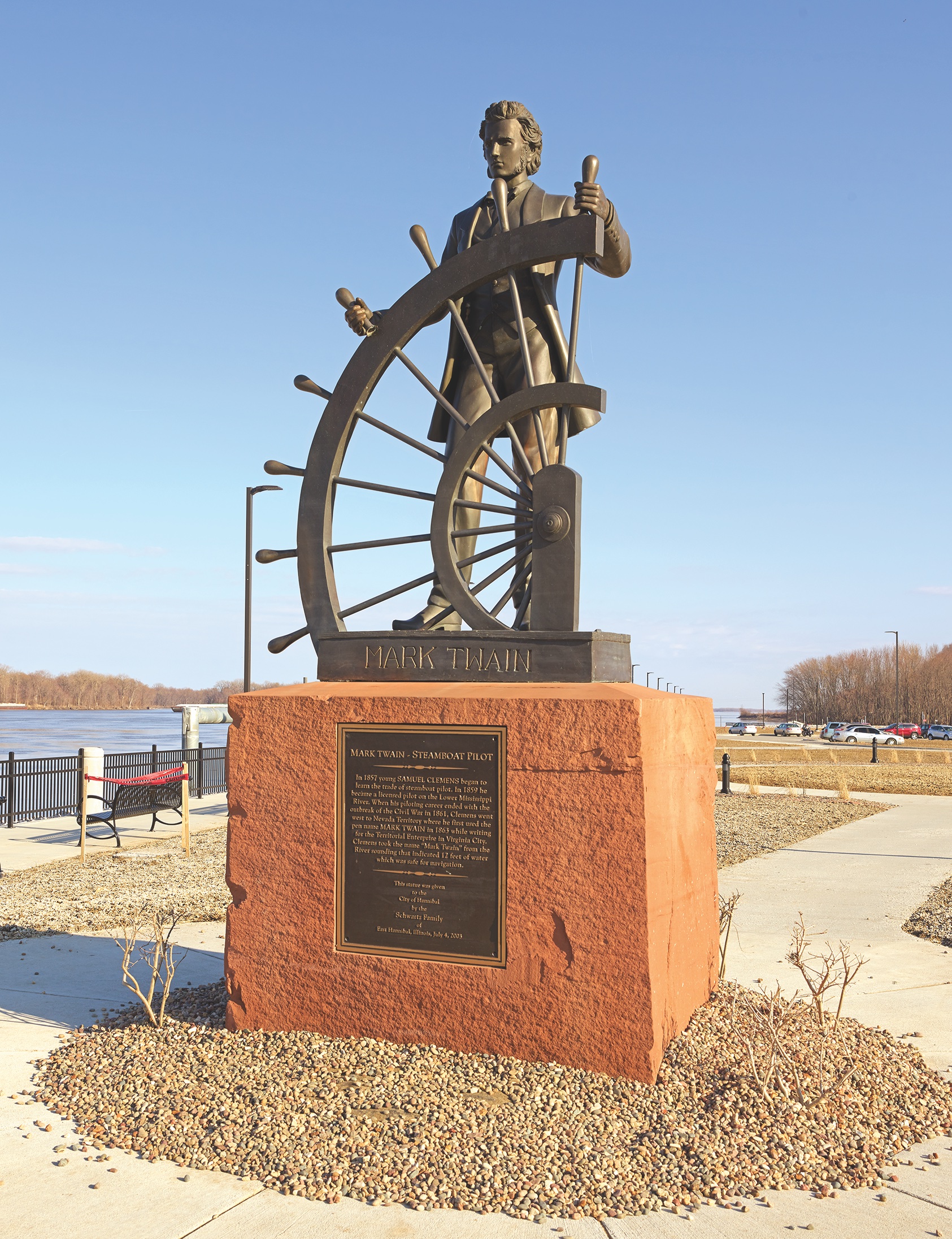
IOWA
Fort Madison: Just north of the Missouri border, the 1808 Army outpost was the first fort on the Upper Mississippi River and the northernmost defense during the War of 1812.
Quad Cities: Bettendorf and Davenport, Iowa, and Rock Island and Moline, Illinois, make up the famous four river towns. Spend a long weekend exploring; the Rock Island Arsenal Museum is closed for renovations until the summer of 2022.
LeClaire: The Mississippi River port city was home to the best riverboat captains who could guide steamboats through the area’s treacherous rapids.
Dubuque: Once one of the largest industrial cities on the Upper Mississippi, the crossroads port city is now home to the National Mississippi River Museum and Aquarium. Dyersville and the “Field of Dreams” is a short drive west on U.S. 20.
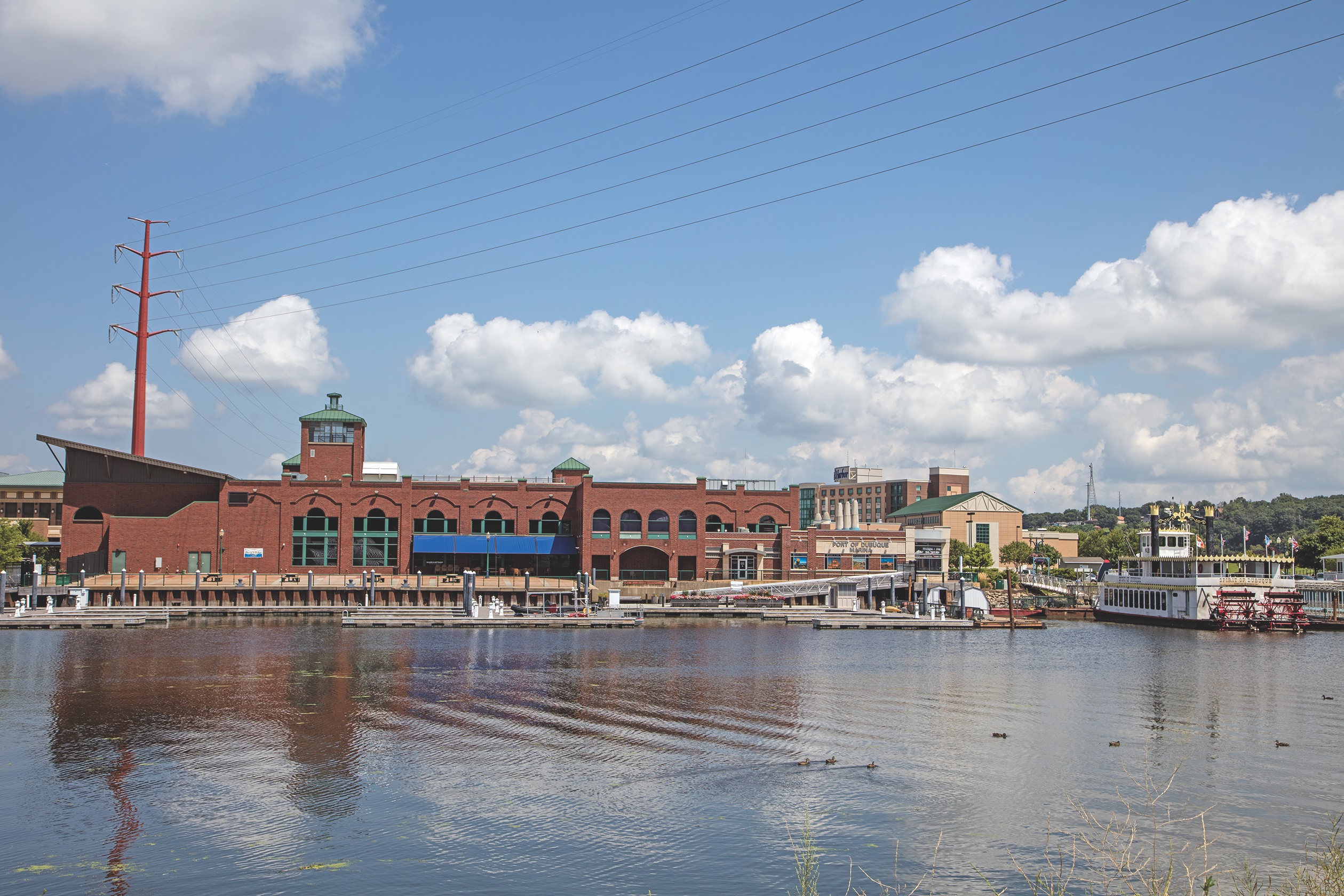
Guttenberg to New Albin: Take your time exploring the small river towns and communities of Iowa’s Mississippi River Bluff Country, including Guttenberg, Marquette, McGregor, Effigy Mounds National Monument, Harper’s Ferry, Lansing and New Albin.
MINNESOTA
Winona: In this beautiful river town, visit the Minnesota Marine Art Museum before driving north to the Upper Mississippi National Wildlife Refuge and National Eagle Center in Wabasha.
Hastings: Relax and enjoy the river town where the St. Croix meets the Mississippi River.
Northfield: Every September the historical society celebrates the town’s defeat of the James and Younger Gang. For Western history enthusiasts, a side trip to the town should not be missed.
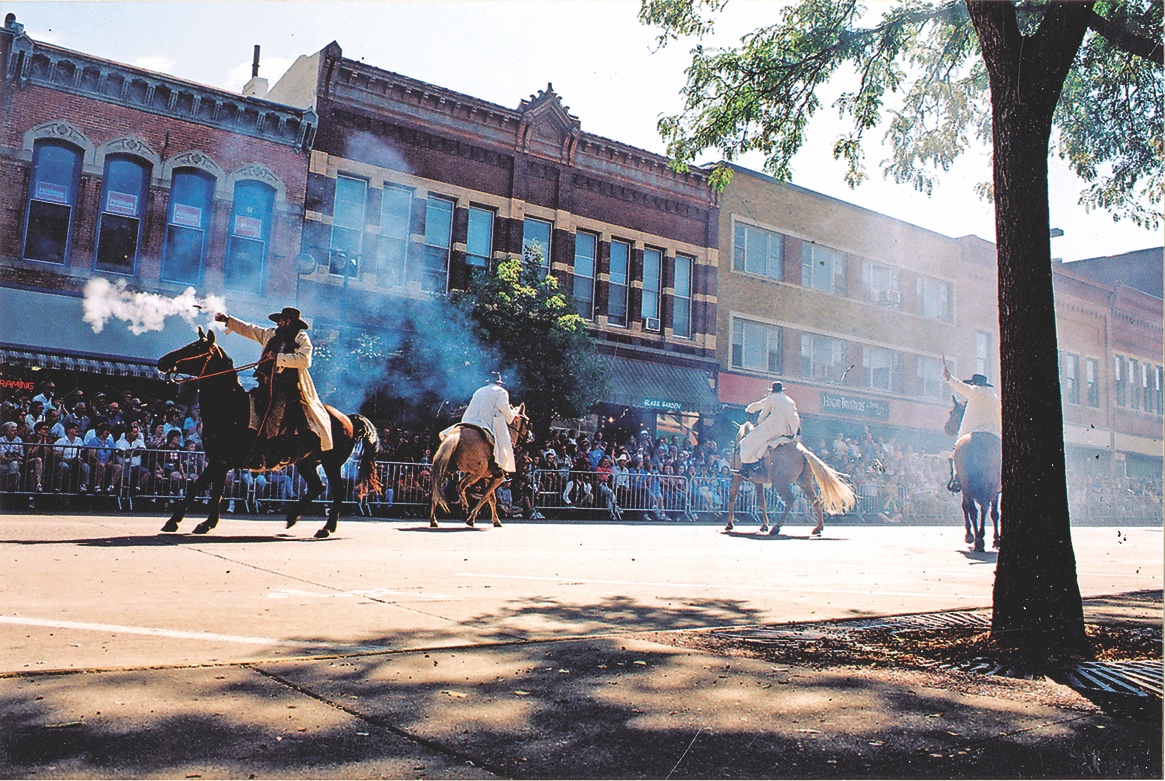
Minneapolis-St. Paul: Like St. Louis, one of the major port cities of the Mississippi, the Twin Cities’ cultural sites, museums, natural wonders and state capitol in St. Paul make it a great place to conclude a tour of the Upper Mississippi River.
Websites: VisitMo.com, TravelIowa.com, ExploreMinnesota.com, NPS.gov, FS.USDA.gov, FHWA.dot.gov, ExperienceMississippiRiver.com
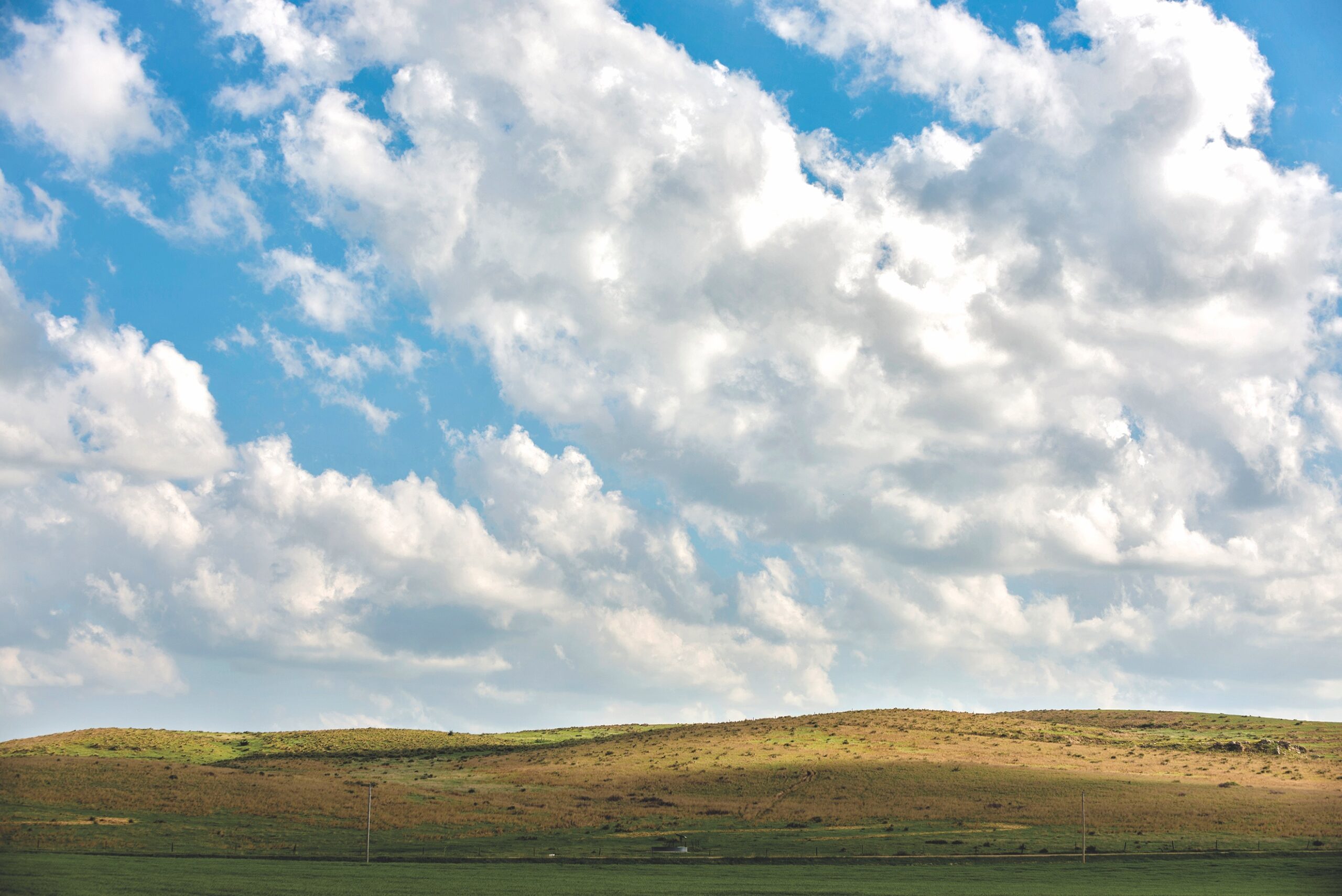
Southern Prairie and Plains
Following the Guidon
Discover the history of frontier Army life in Kansas on a border-to-border tour.
The first settlements across the Missouri River began in the Kansas Territory in 1827 with the founding of Fort Leavenworth, which will celebrate its 195th anniversary in 2022. Leavenworth was the first stop across the river from Missouri on the Santa Fe Trail, and after the Civil War it remained a key crossroads for travelers in all directions. With the development of railroads and homesteading in the Sunflower State after 1865, the Army began building key outposts and military roads across the state to protect railroaders, settlers and stage lines. In addition to Leavenworth, Fort Riley, adjacent to Manhattan, is still an active Army base.
Today, intrepid travelers can follow the guidon west from Leavenworth and tour a series of historic military sites that are maintained as living history centers, museums and in some cases, such as Fort Dodge, as a Veterans’ Home. During the bicentennial year of the Santa Fe Trail, a tour of the national trail while following the Army’s trail across the state will be double the fun.
Travelers unfamiliar with Kansas should know the state’s geography changes from Eastern woodlands and prairie through the Flint Hills to the Great Plains as you travel west. Weather can be harsh in the winter and unpredictable in the spring and summer, but the unending vistas of undulating plains and fields and quaint, welcoming Kansas towns will bring visitors back to the state again and again.
Key Stops:
Leavenworth: The historic city grew around the fort which was America’s key outpost on the Missouri frontier when it was established in 1827. The thriving Missouri River city is a jumping- off place to start multiple tours of the Sunflower State, but make sure to spend a few days to enjoy the city’s culture and tour Fort Leavenworth’s museum and Buffalo Soldier Monument.
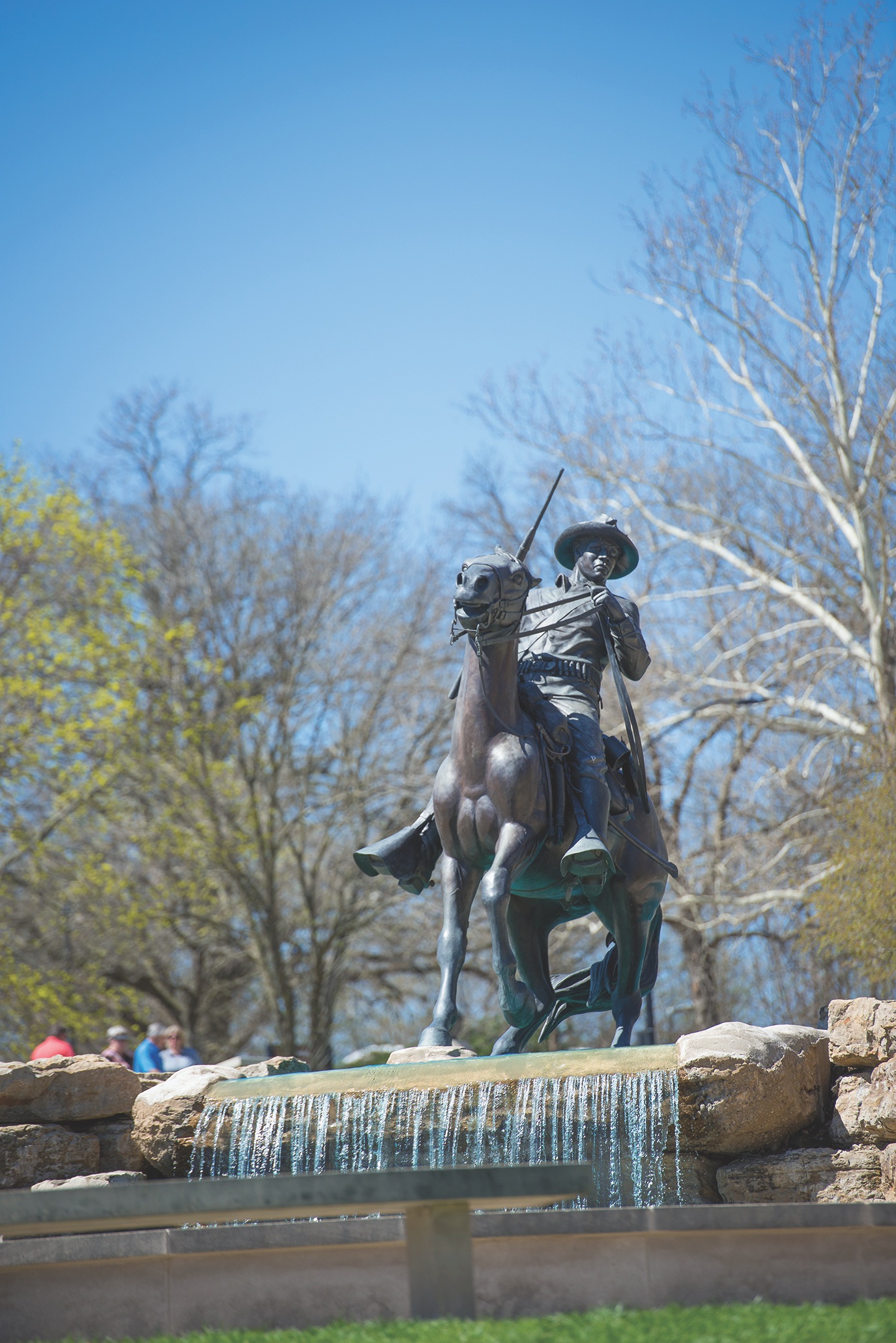
Lecompton: Founded in 1854, the political birthplace of the Civil War is a Kansas and national landmark. Tour the historic sites, including the Territorial Capital Museum and discover the town’s importance to American history.
Topeka: The state capital is a city made for museum-lovers; don’t miss a tour of the Kansas Museum of History.
Manhattan: Fort Riley—the Citadel of the Frontier West—was founded in 1853. Lt. Col. George Armstrong Custer’s 7th Cavalry was organized at the fort in 1866. The fort has three history sites open to the public: the Custer House, the Cavalry and First Infantry Division museums.
Abilene: The first great railhead for Texas cattlemen coming up the Chisholm Trail, Abilene celebrates its Old West heritage at the Dickinson County History Museum and the living history center, Old Abilene Town. During the summer reserve a ride on the historic Abilene & Smoky Valley Railroad.
Salina: Take old U.S. 40 to Salina, parallel to the Old Santa Fe Trail. When in town, visit the Smoky Hill Museum to learn about local history.
Ellsworth: Once one of the great Kansas cattle towns, Ellsworth’s railhead was a key destination for Texas cattlemen coming up the Chisholm Trail. Don’t miss a tour of the Hodgen House Museum Complex on State Route 14 and Fort Harker Museum, just east of the city.
Great Bend: This historic town was built along the famous curve of the Arkansas River on the Santa Fe National Historic Trail. Learn about the short-lived Fort Zarah at the local Barton County Historical Society Museum and Village.
Larned: Fort Larned National Historic Site is the best-preserved 19th-century frontier fort and is well-known for its summertime living history programs featuring rangers and docents in period dress.
Fort Wallace: The fort is the westernmost Army outpost of post-Civil War frontier Kansas. A historic cemetery is maintained at the Fort Wallace Museum on U.S. 40 east of Sharon Springs.
Dodge City: From I-70, exit on U.S. Highway 50 and head southwest to Dodge City, paralleling the Santa Fe National Historic Trail. “The Queen of the Cowtowns” is a great place to stay for a long vacation and enjoy all the local historical attractions, including the acclaimed Boot Hill Museum.
Websites: TravelKS.com, NPS.gov
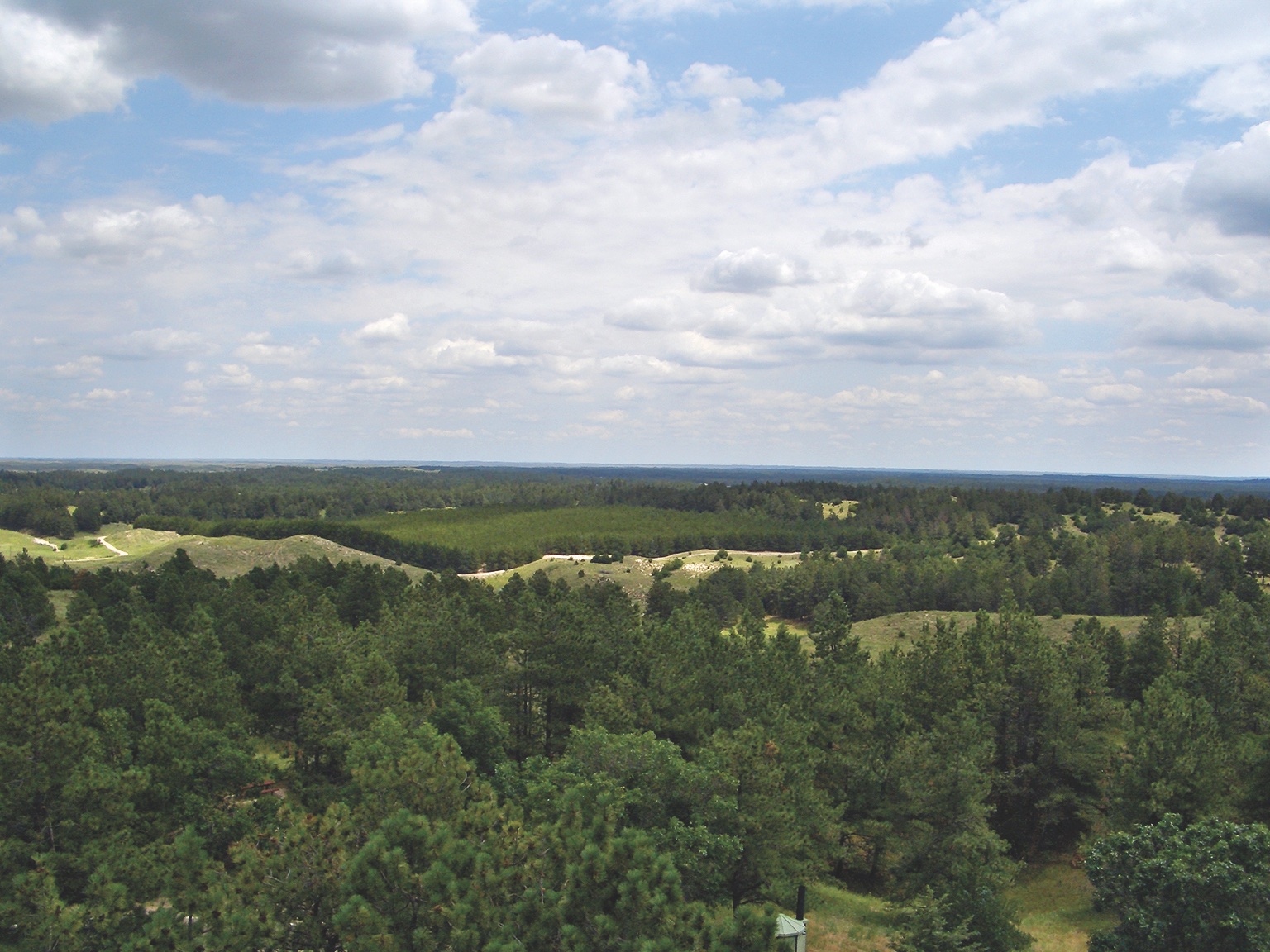
A Sea of Grass
Discover the wonders of Nebraska in a tour across the Cornhusker state.
For the adventurous traveler a drive across Nebraska’s Sand Hills promises endless vistas and lots of Old West history.
From Omaha to Grand Island, the landscape will begin to change along the Platte River, but rather than continue west on the traditional route across the state on I-80/U.S. 30—which parallels the original Overland Trail (Oregon, California, Mormon Pioneer, Pony Express and Transcontinental Railroad)—take Nebraska’s State Highway 2 for 370 miles across the heart of the Cornhusker State’s awe-inspiring Sand Hills to the northwest corner community of Crawford and its neighbor Chadron. Along the way, the Great Plains route will inspire the driver with magnificent vistas, long, quiet stretches of highway and inviting, small ranching and farming communities.
Enjoy the beauty of Nebraska’s heartland, and you will fall in love forever with the Sand Hills, the Great Plains and the small towns along the way.
Key Stops:
Omaha: Nebraska’s largest city is a great destination for a long weekend. Schedule time to tour the Durham and Joslyn Art museums. A perfect place to start a tour of the Cornhusker State.
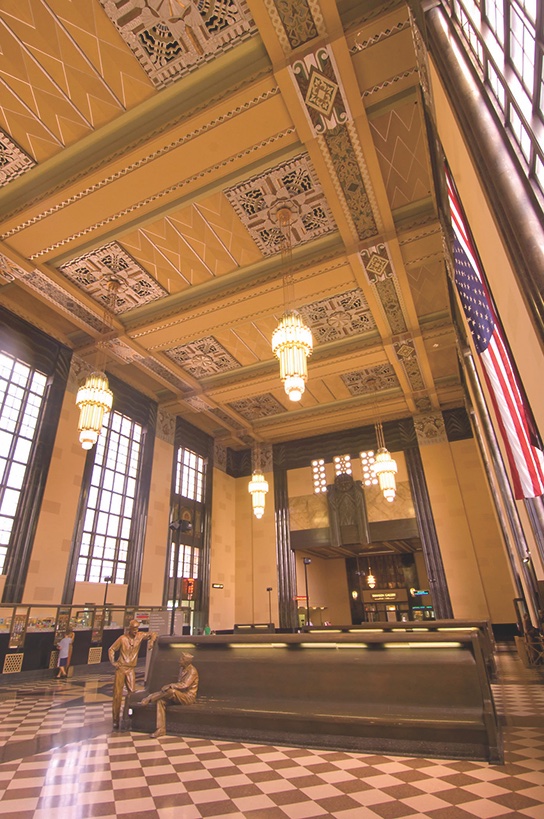
Lincoln: Here you’ll find University of Nebraska and the Nebraska Historical Society.
Grand Island: Don’t miss a tour of Grand Island’s exceptional Stuhr Museum of the Prairie Pioneer and a tour of its living history center. The Platte River city is a great overnight before heading west on Nebraska’s Highway 2.
Broken Bow: Schedule time to tour the historic town, the largest city between Omaha and Crawford, and kick off your drive on the Sandhills Journey National Scenic Byway at the highway’s visitor center. Also, don’t miss the Custer County Museum.
Scott Tower: This unique roadside rest has a tower that overlooks the Nebraska National Forest and grasslands.
Alliance: At this ranching community, learn about local history at the Knight Museum and Sandhills Center.
Crawford: At this town, home to Fort Robinson Museum and History Center, book a room or camp and explore the history of the largest state park in northwestern Nebraska. Take time to enjoy a trail ride into the nearby hills.
Chadron: In this gateway city to South Dakota’s Black Hills at the crossroads of US 20/385, the Museum of the Fur Trade should not be missed.
Websites: VisitNebraska.com, NPS.gov, FS.USDA.gov

